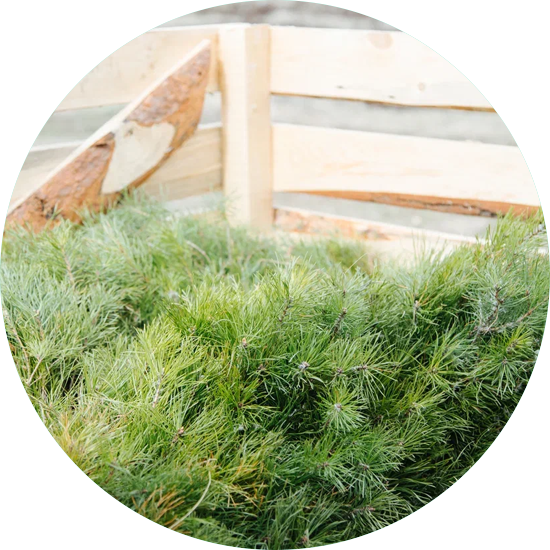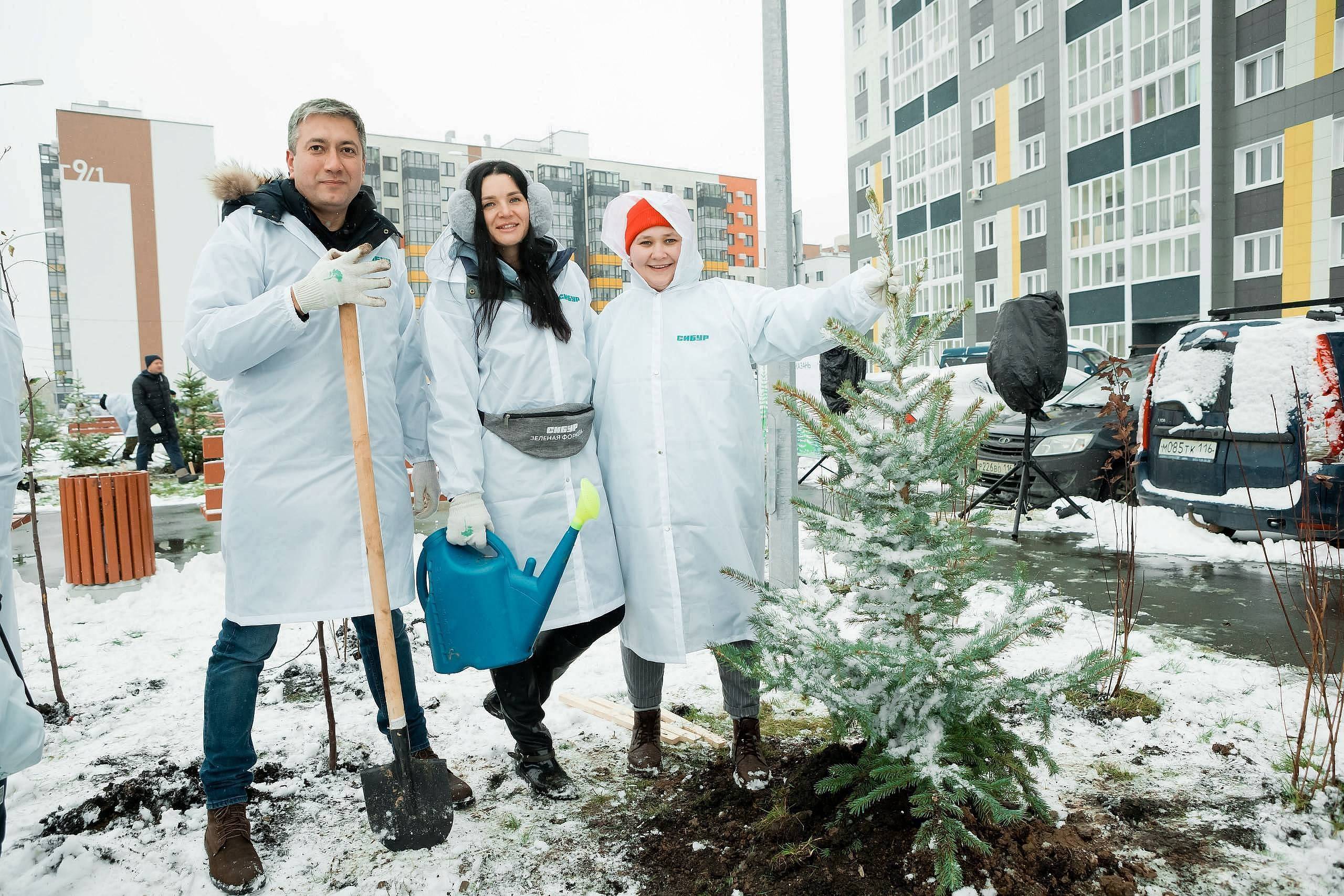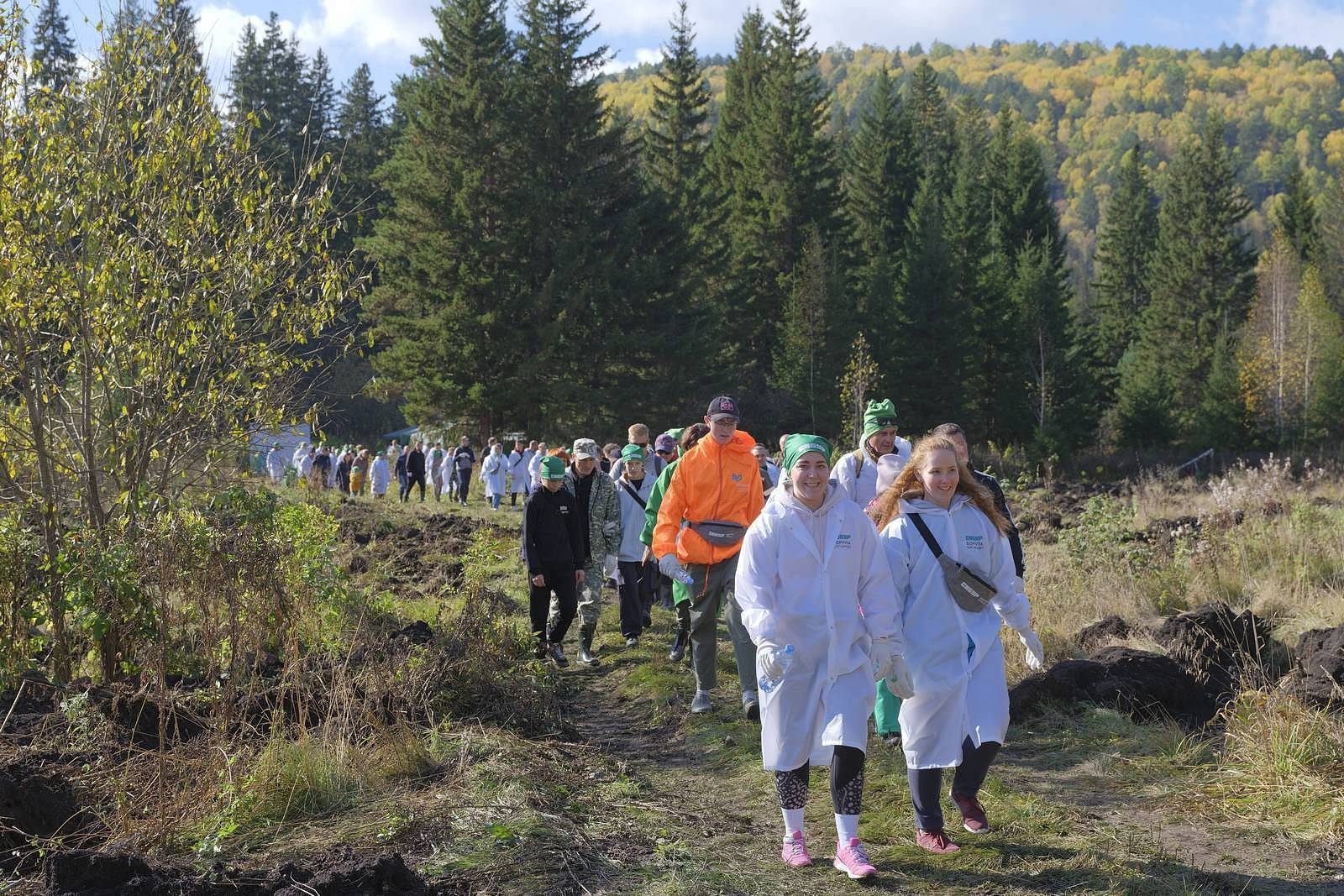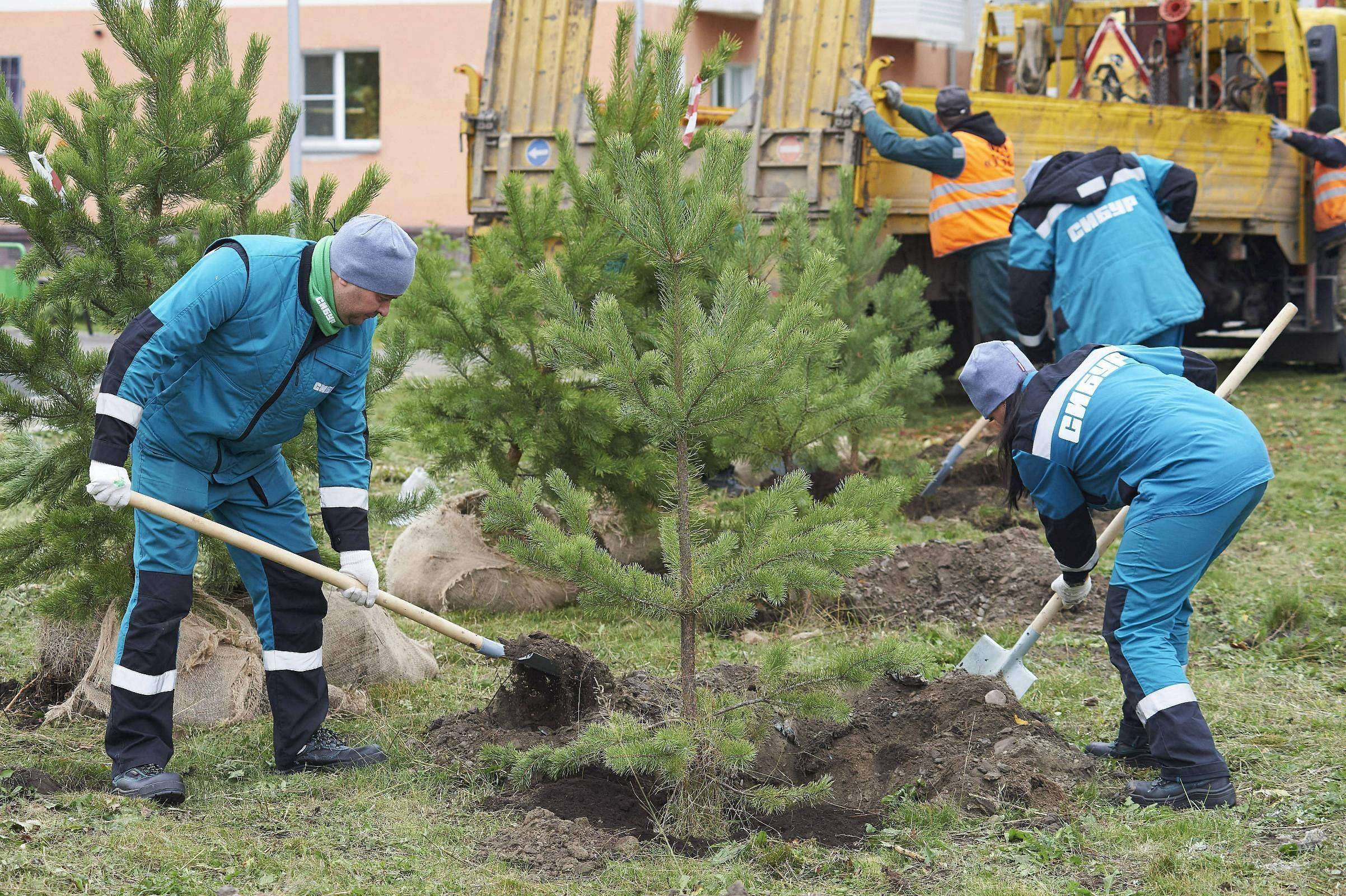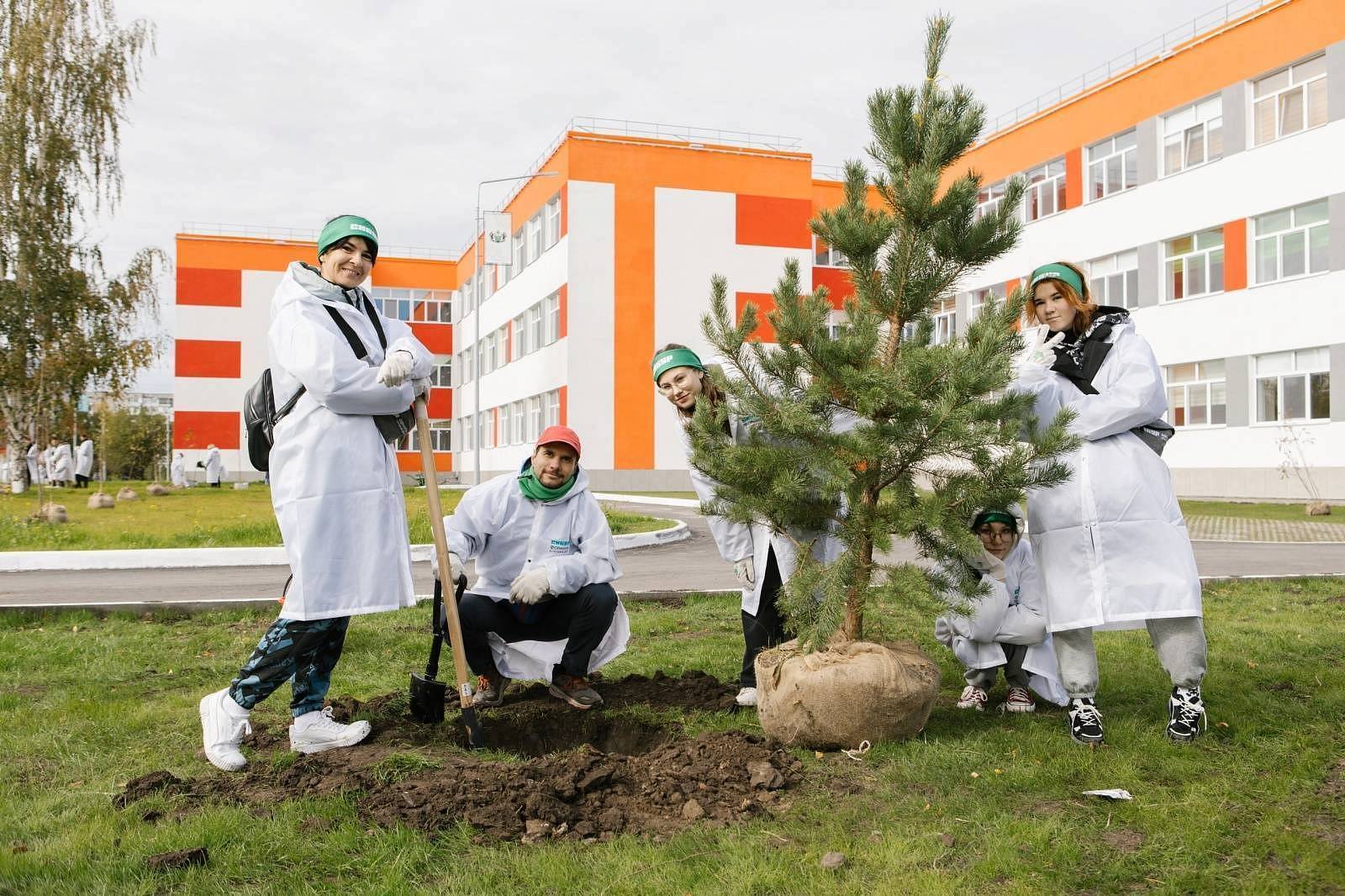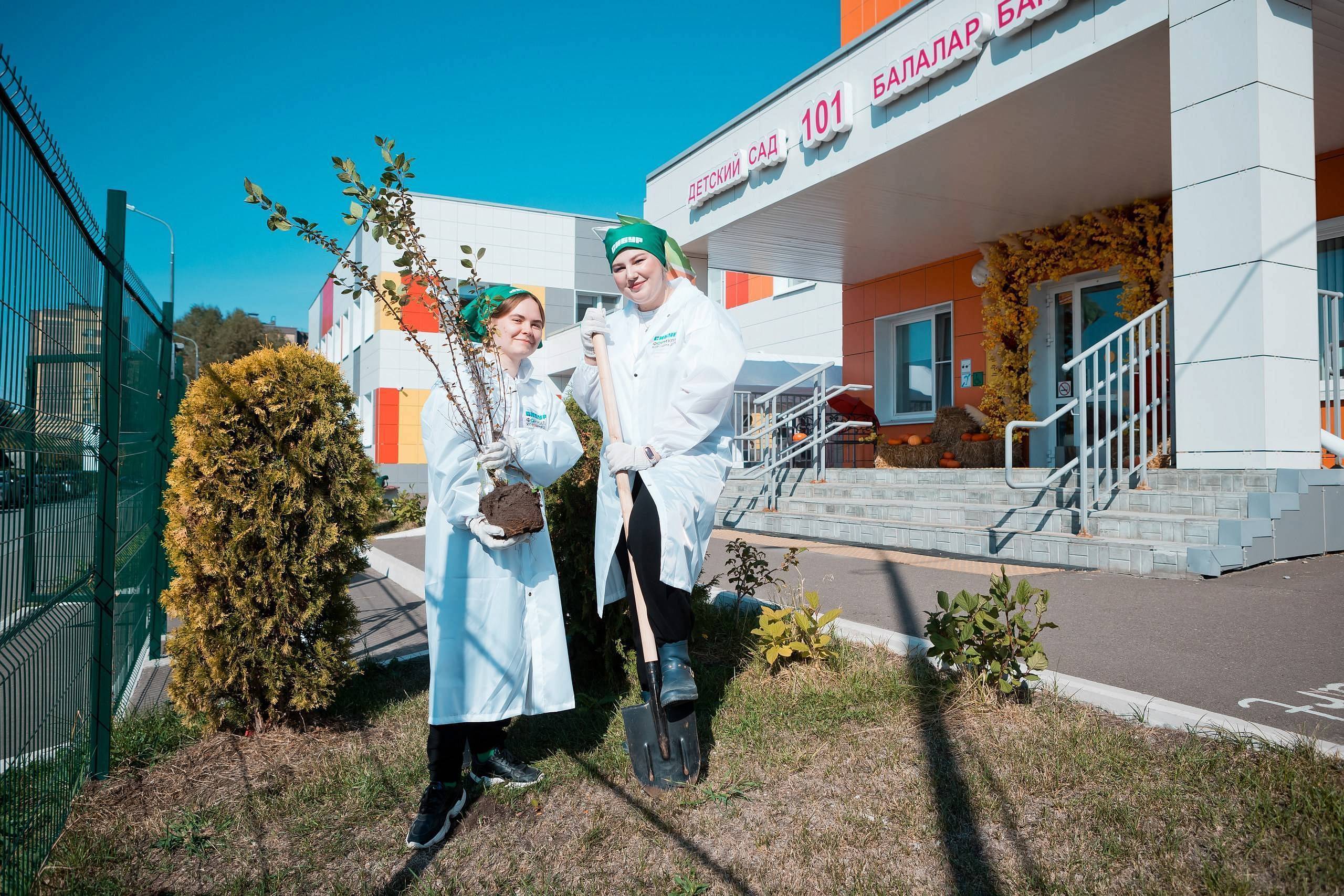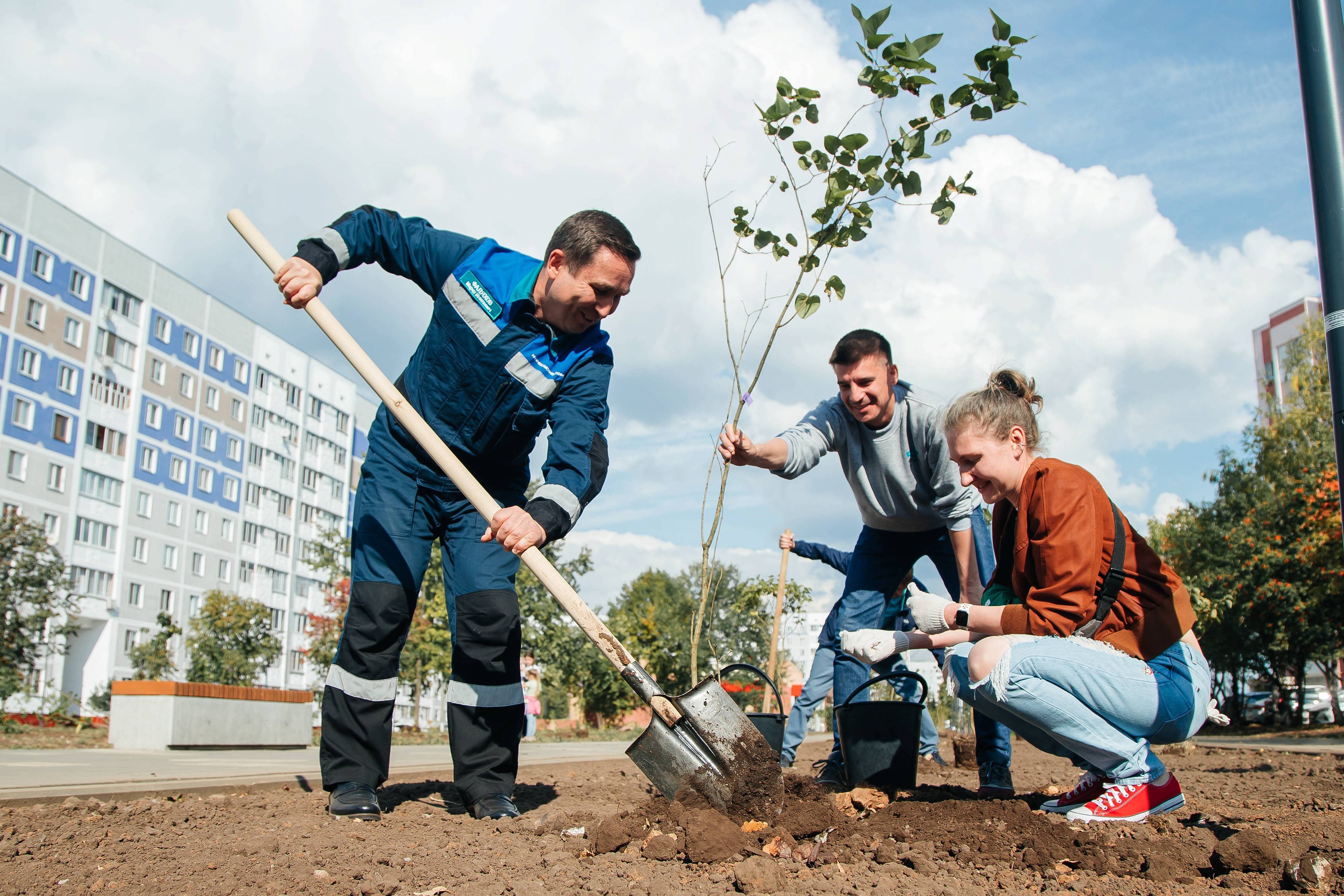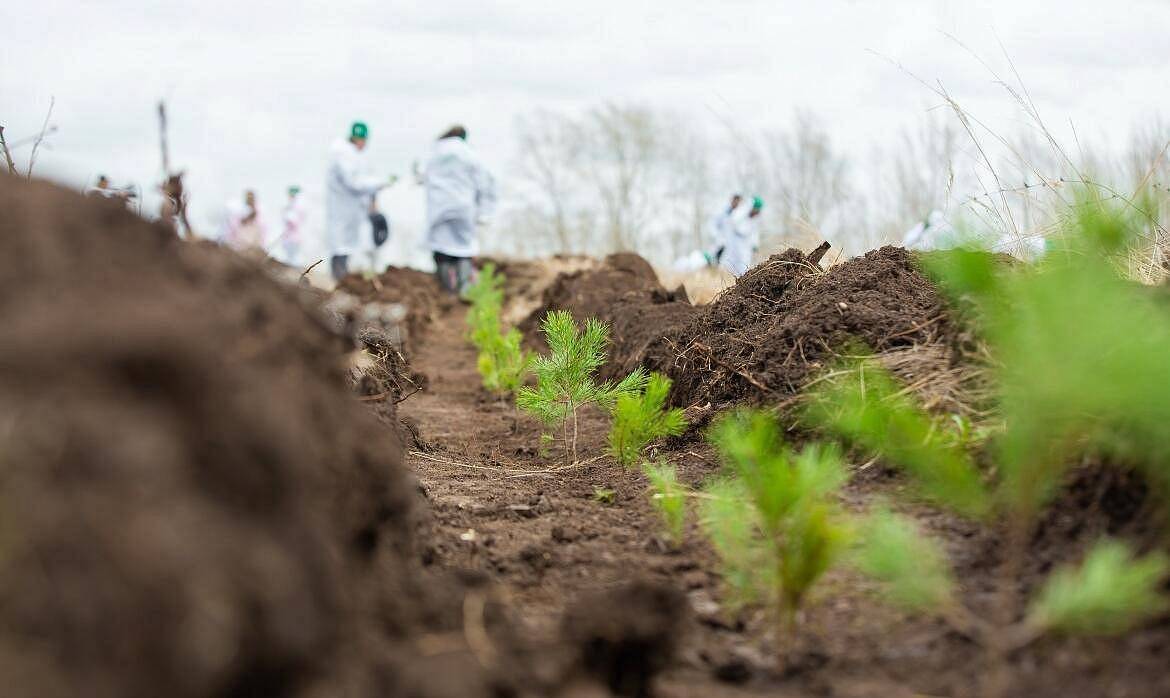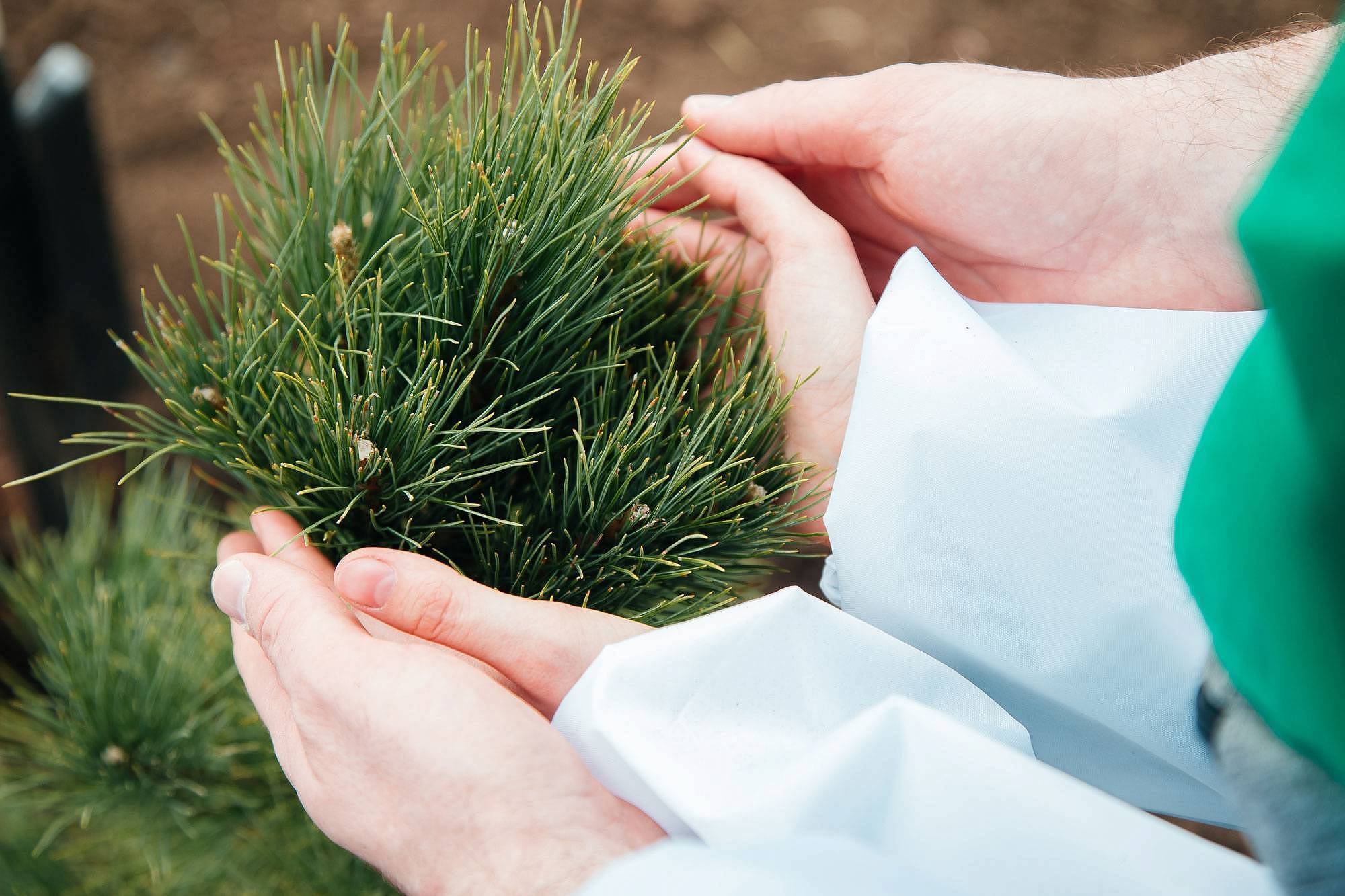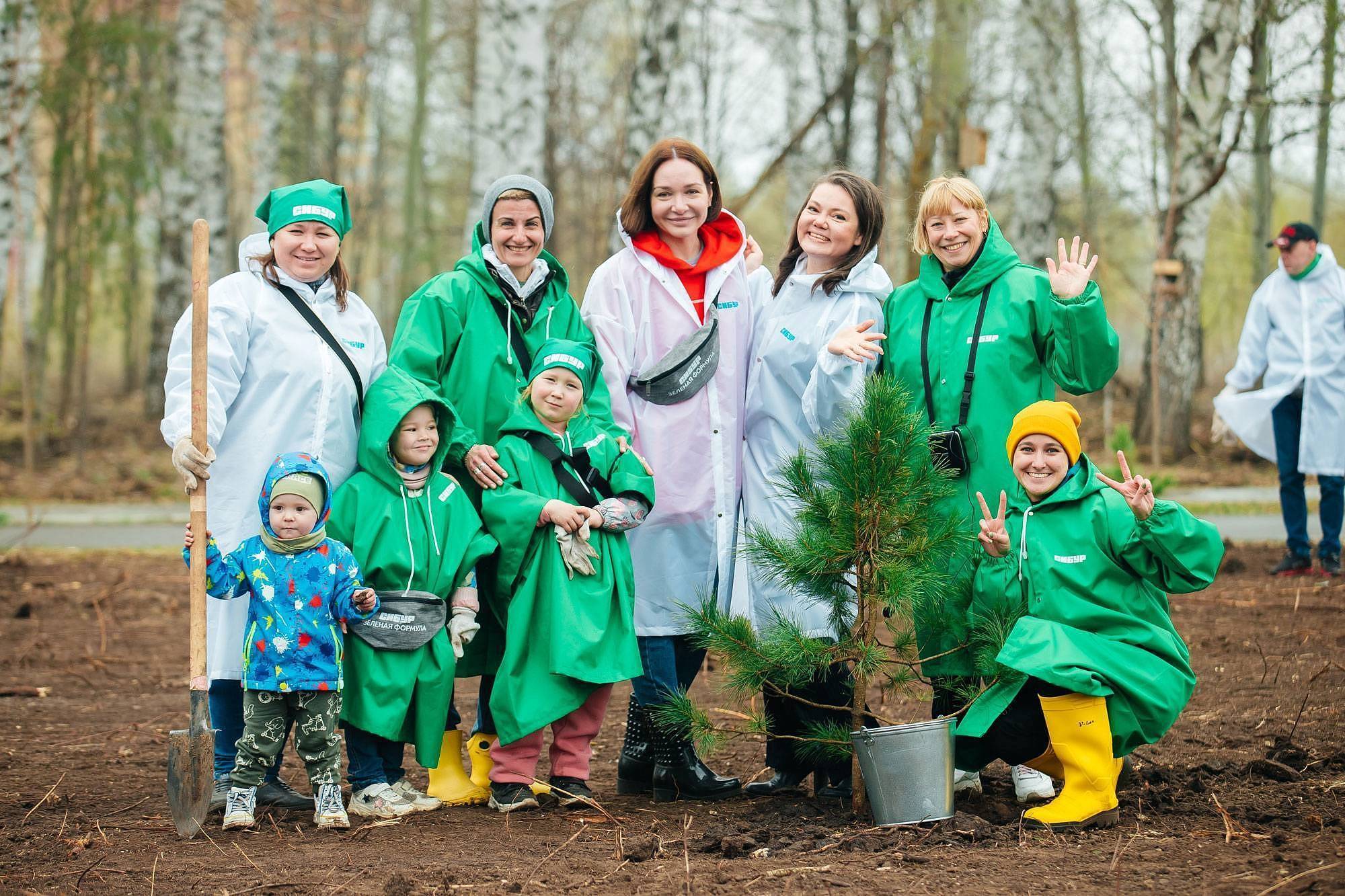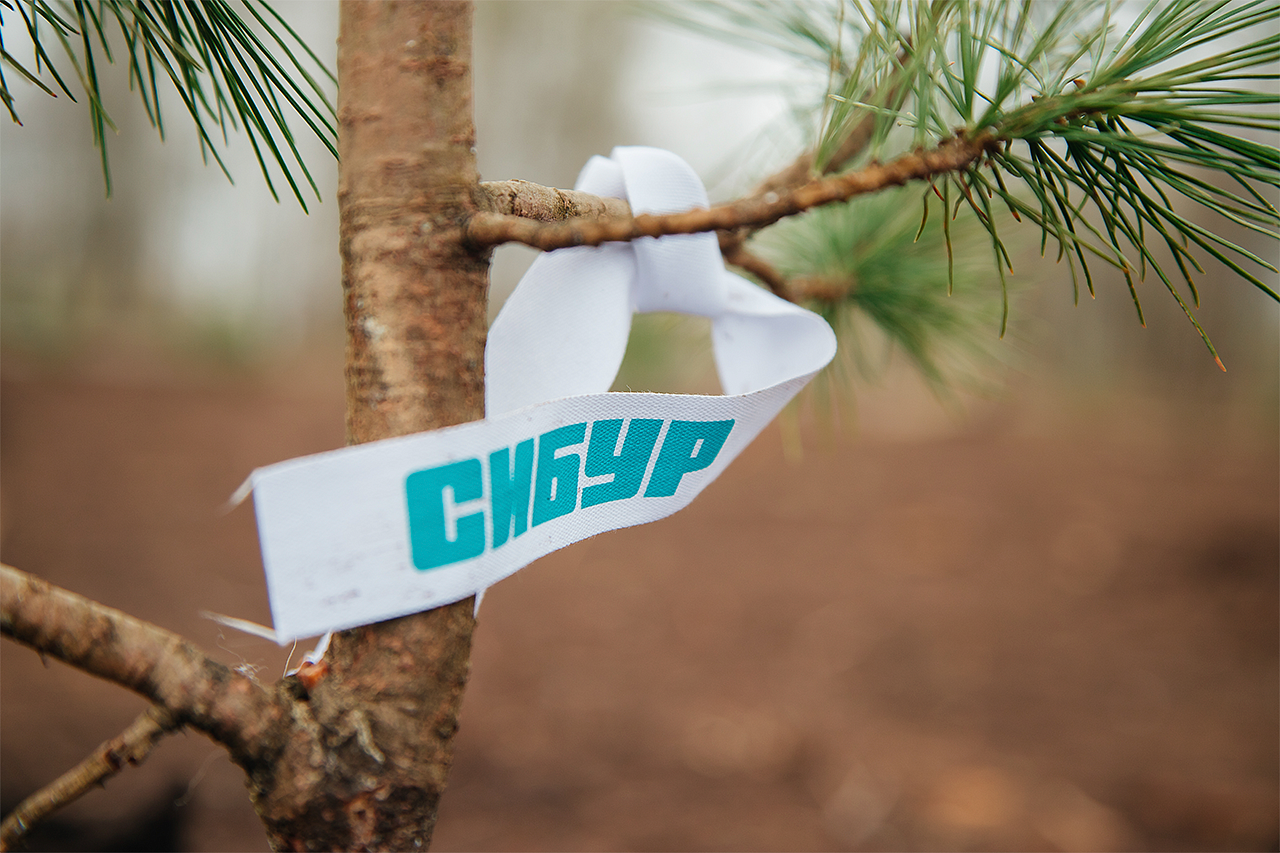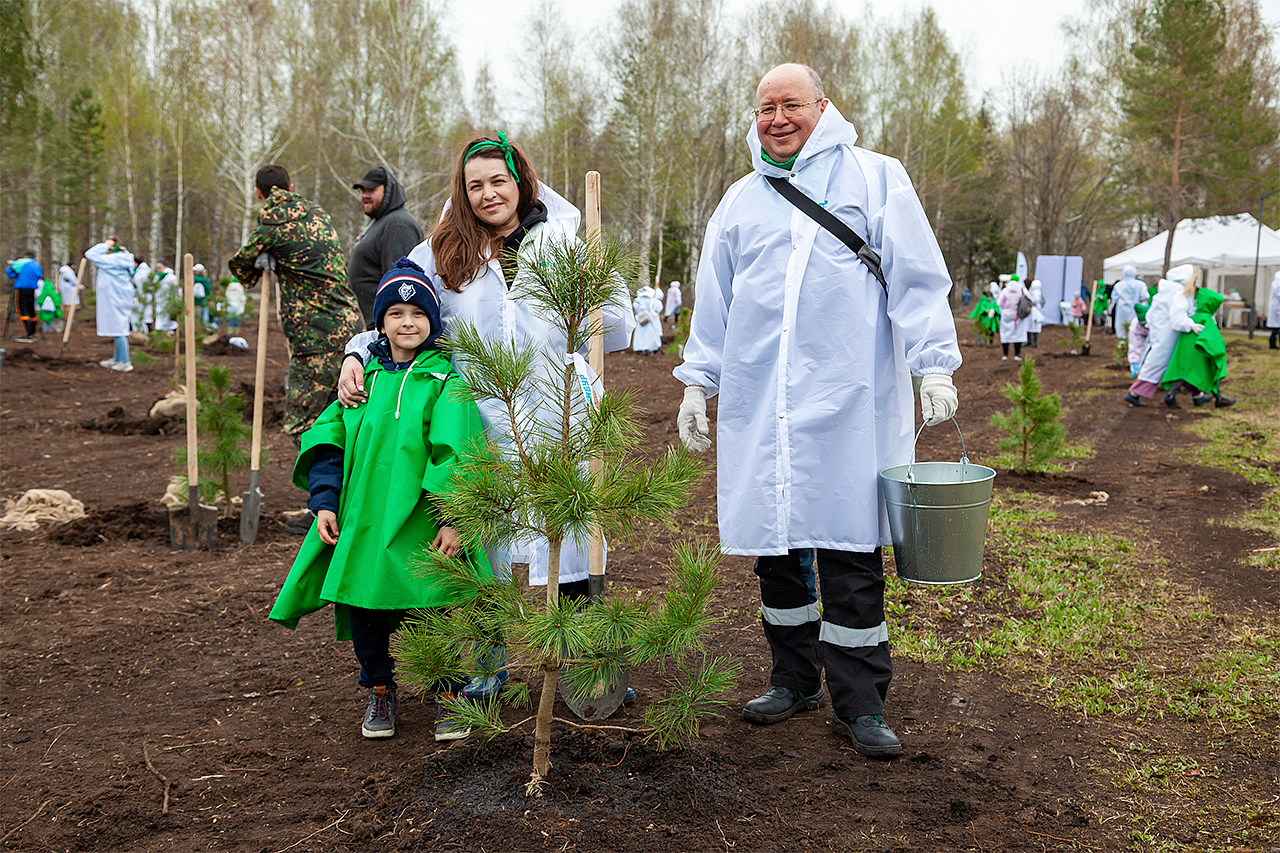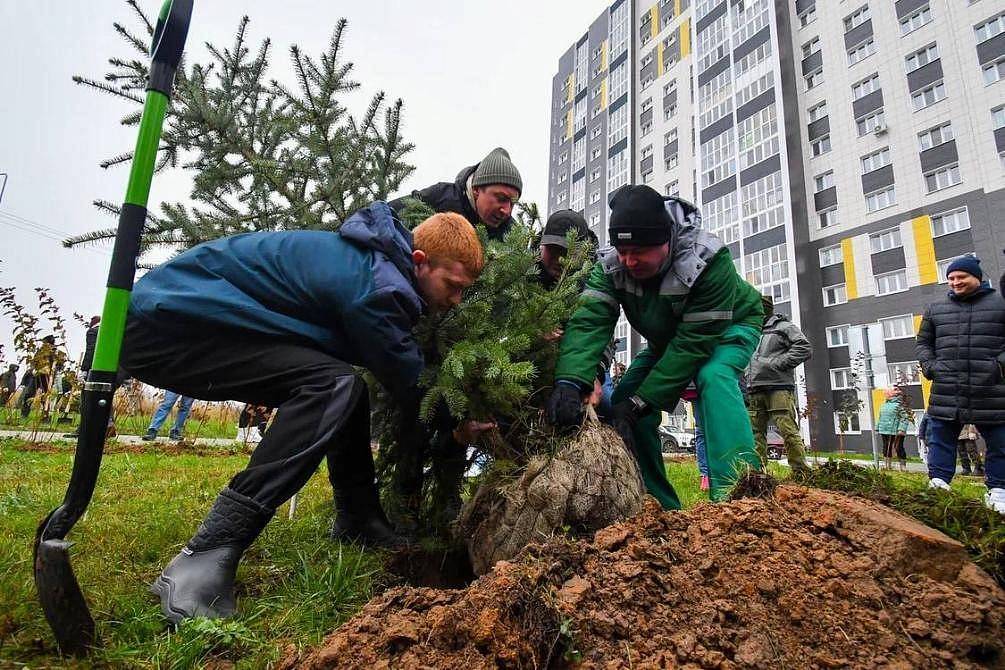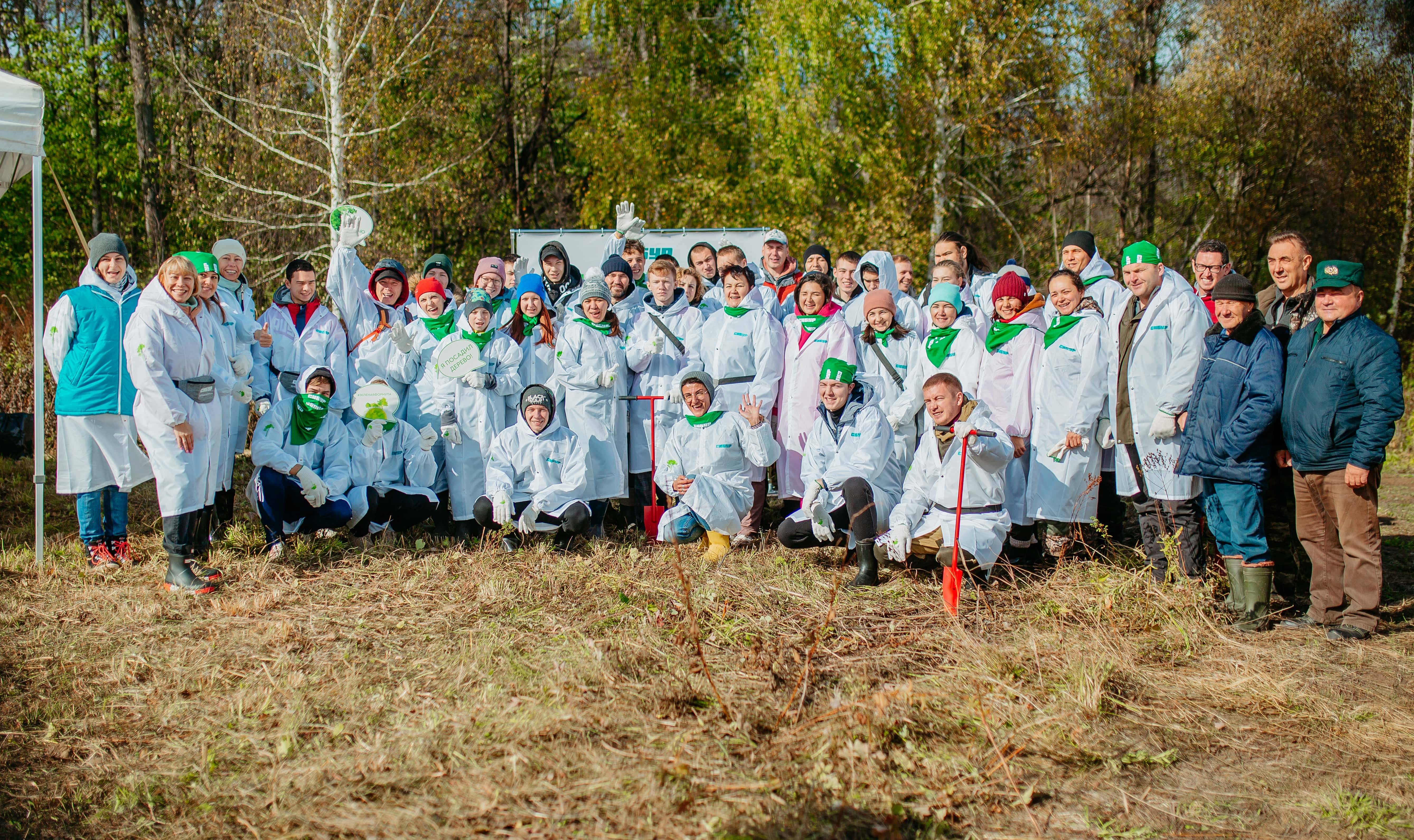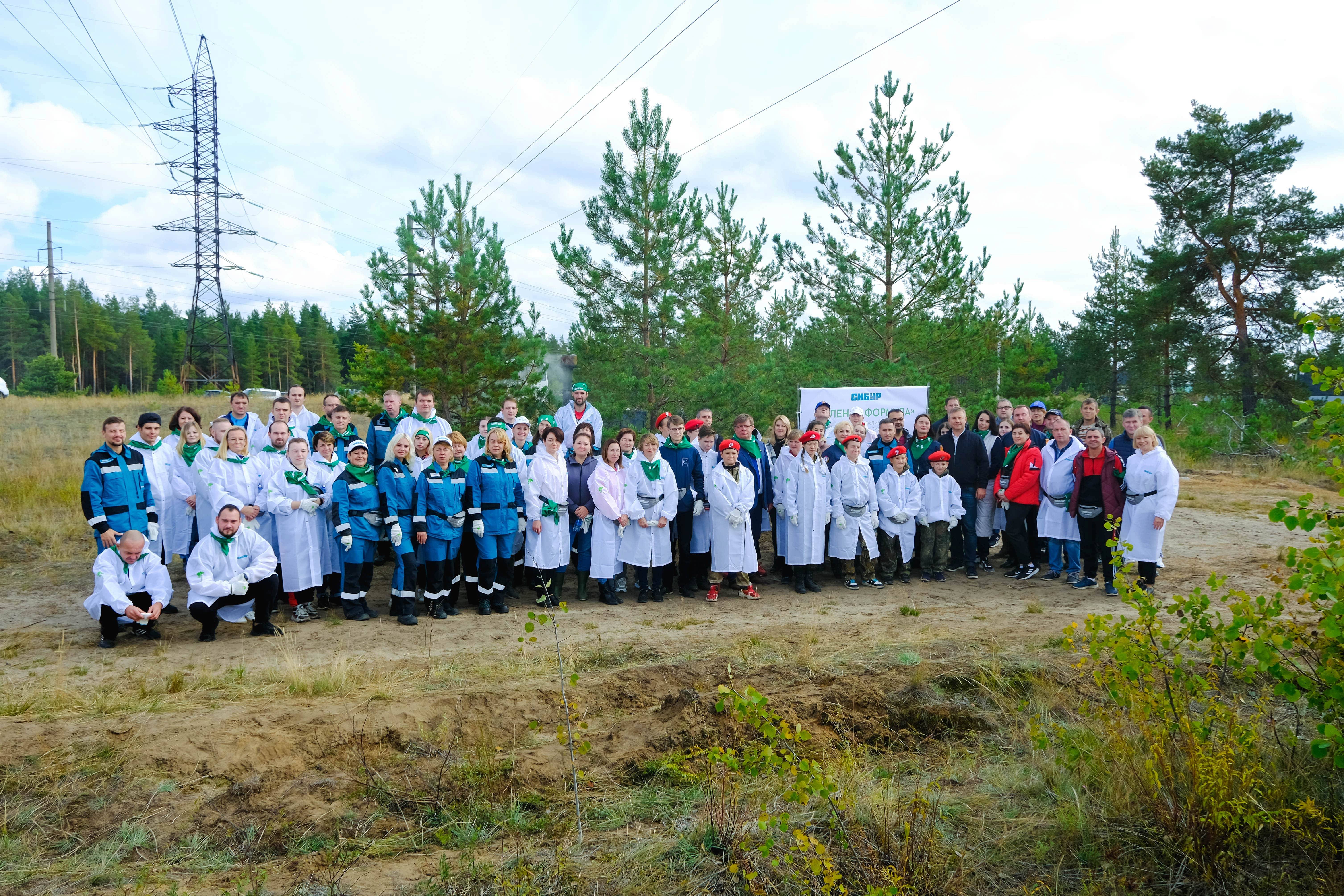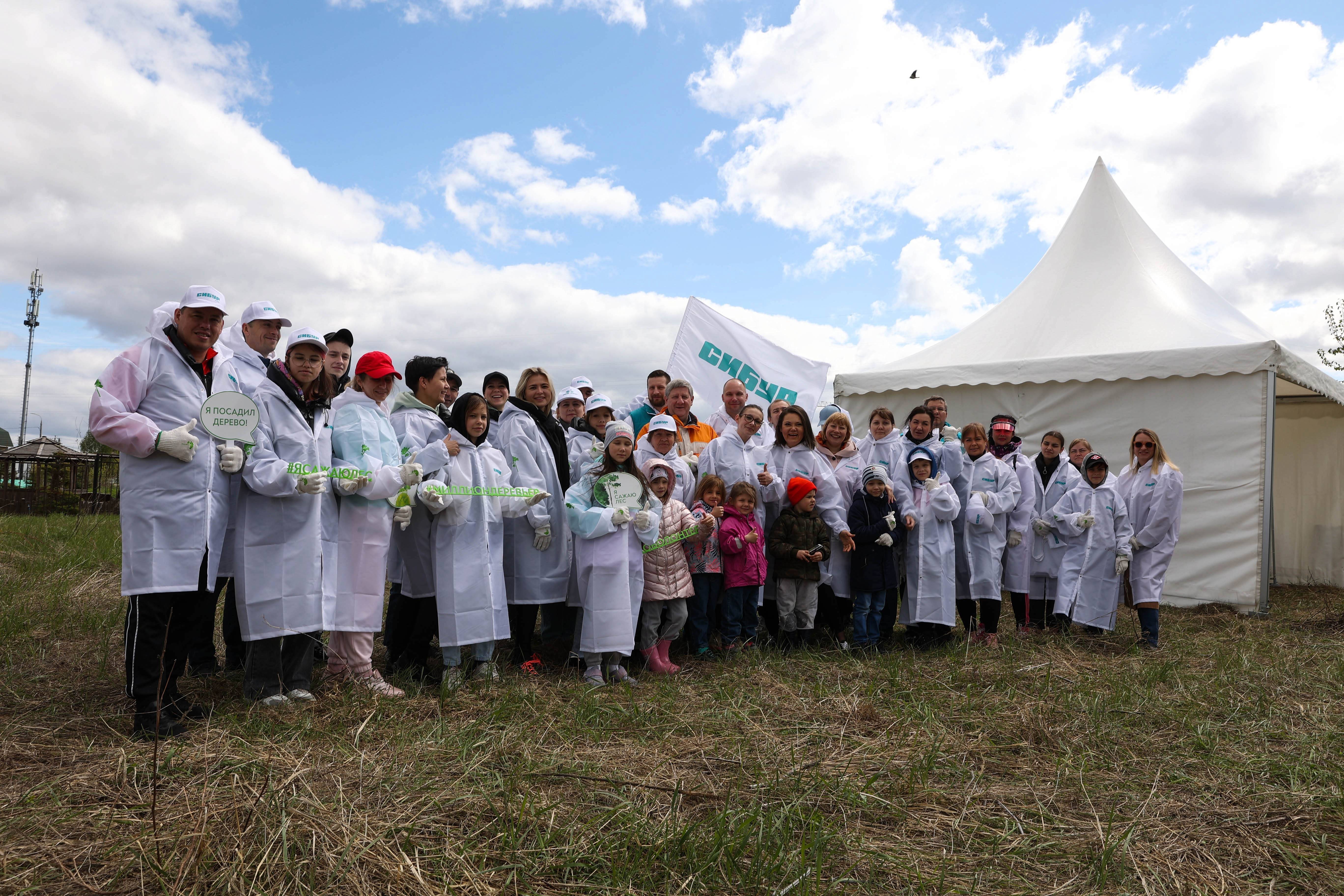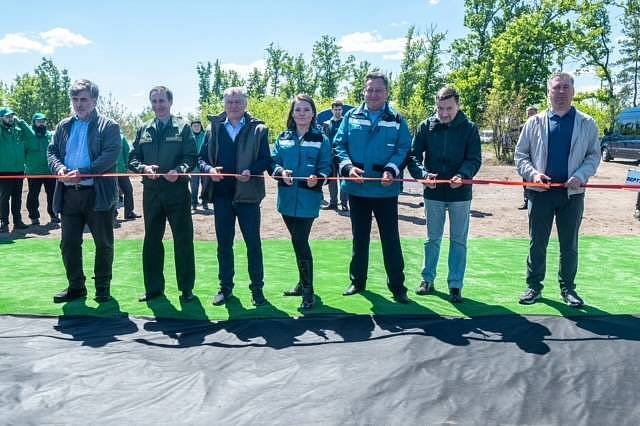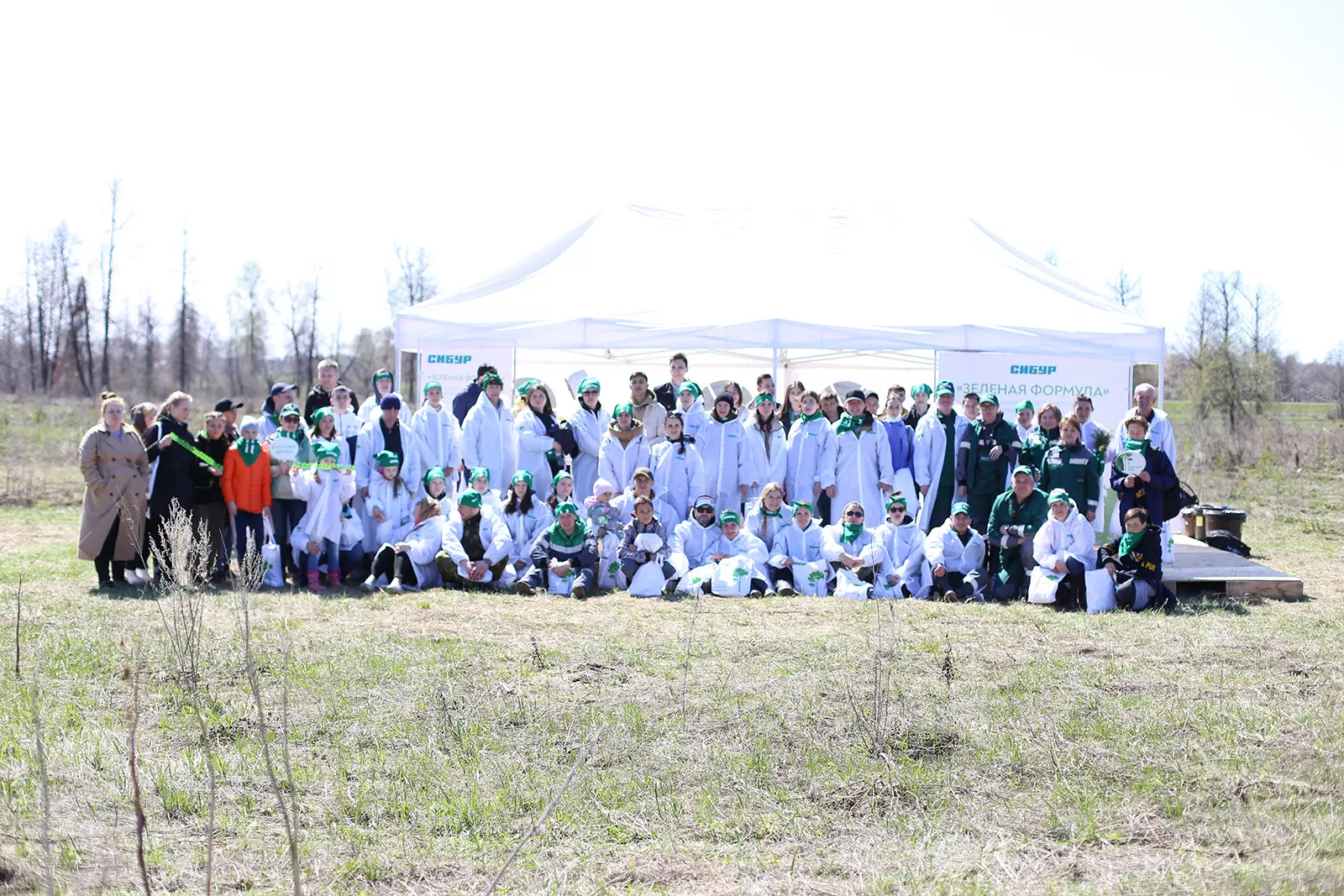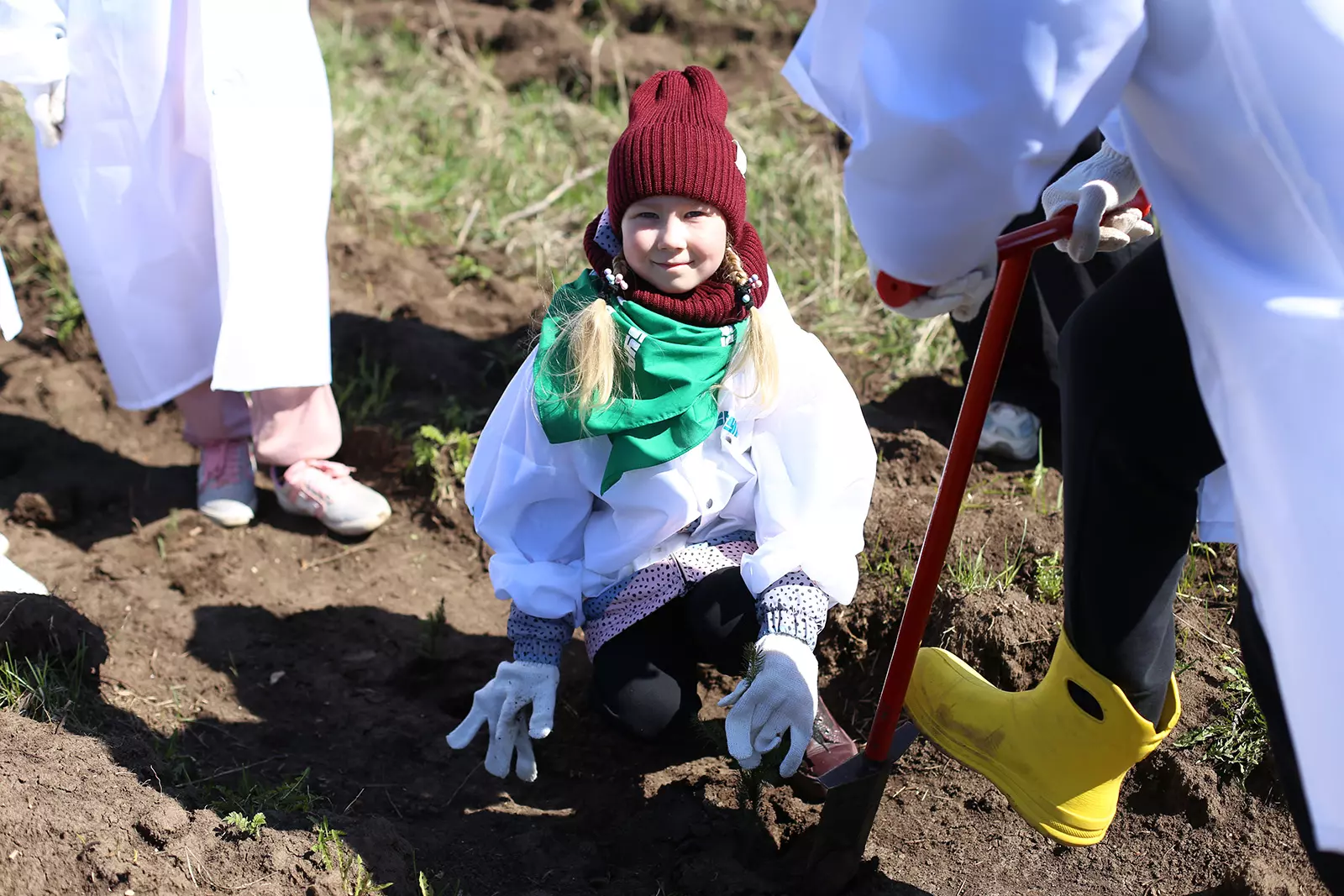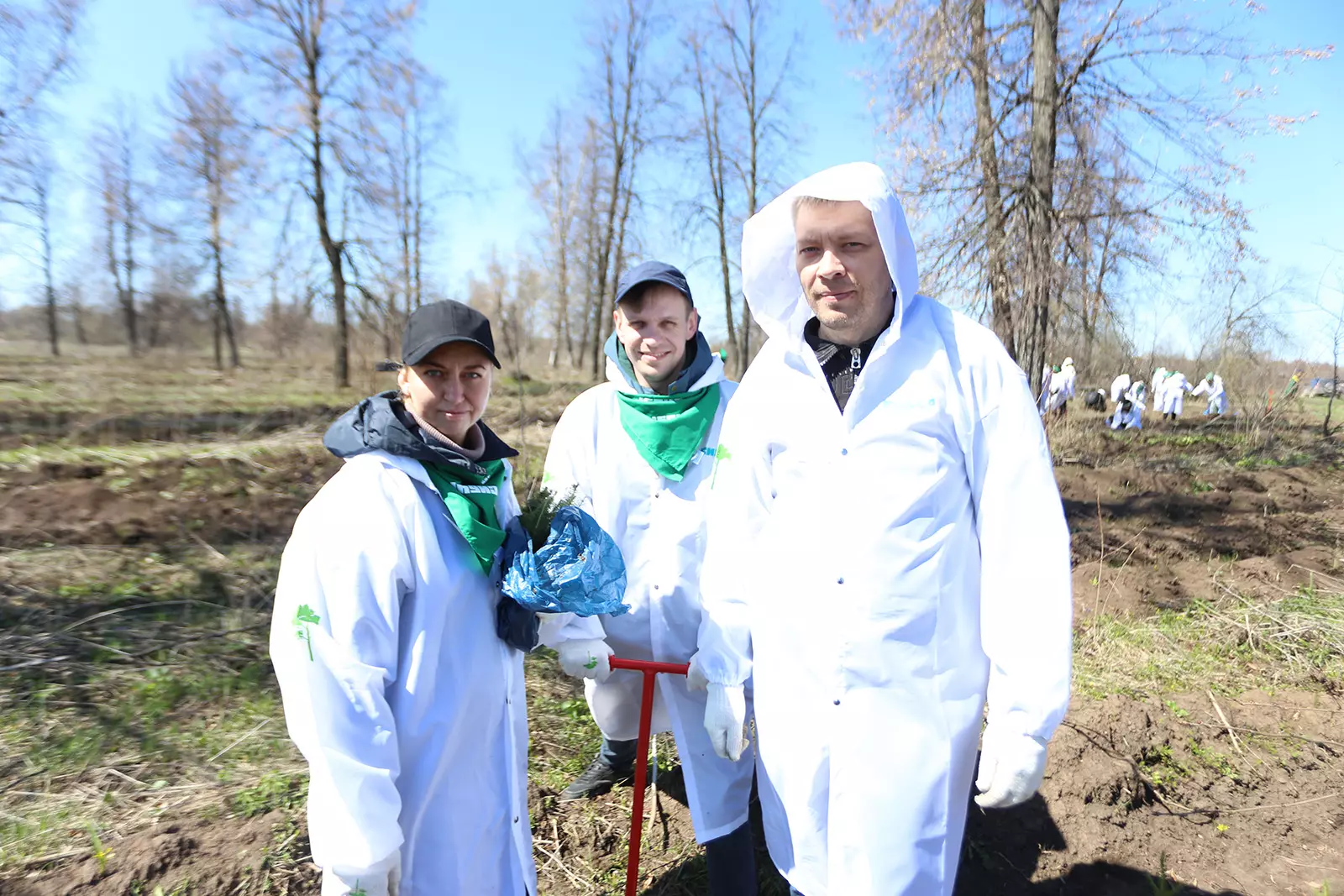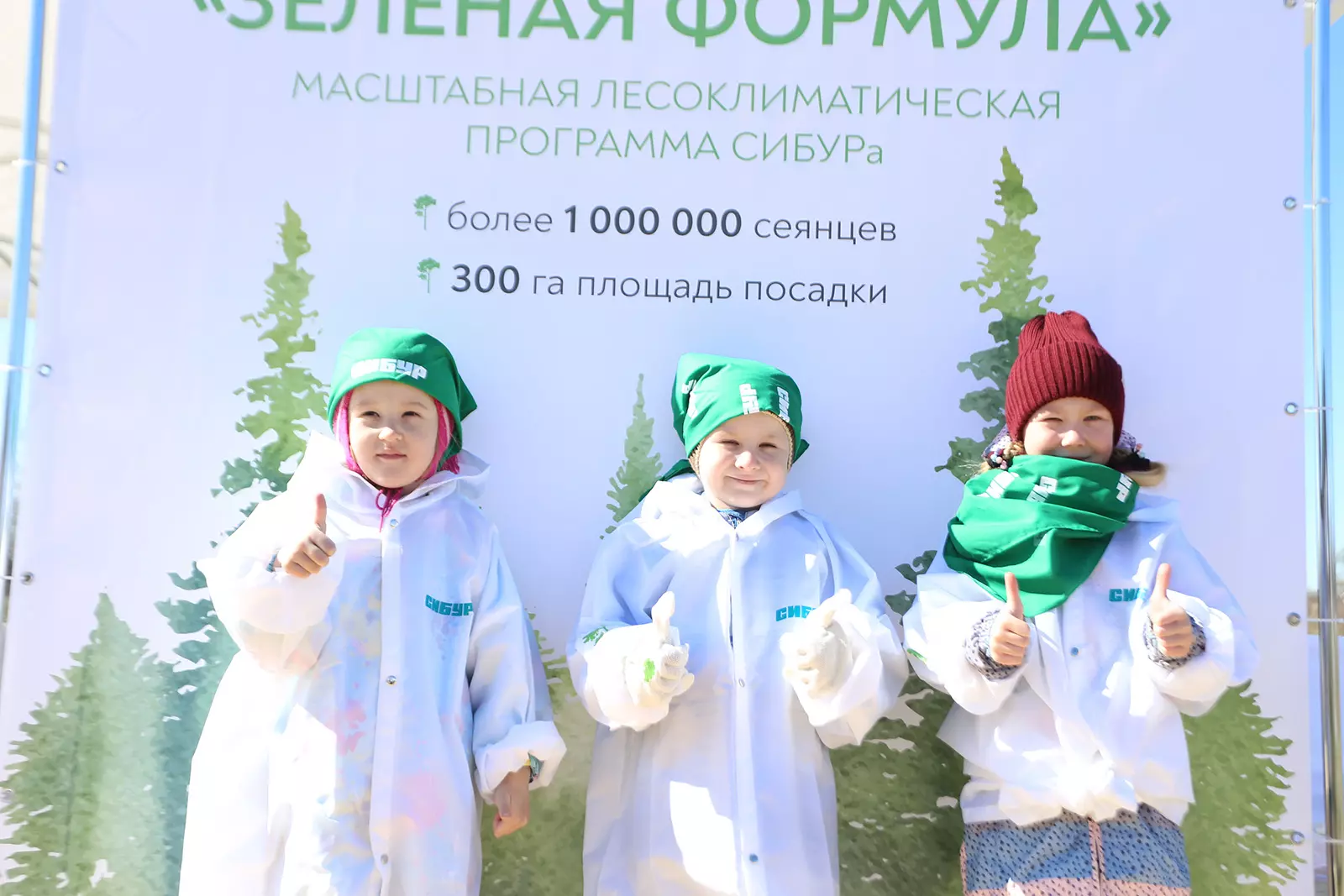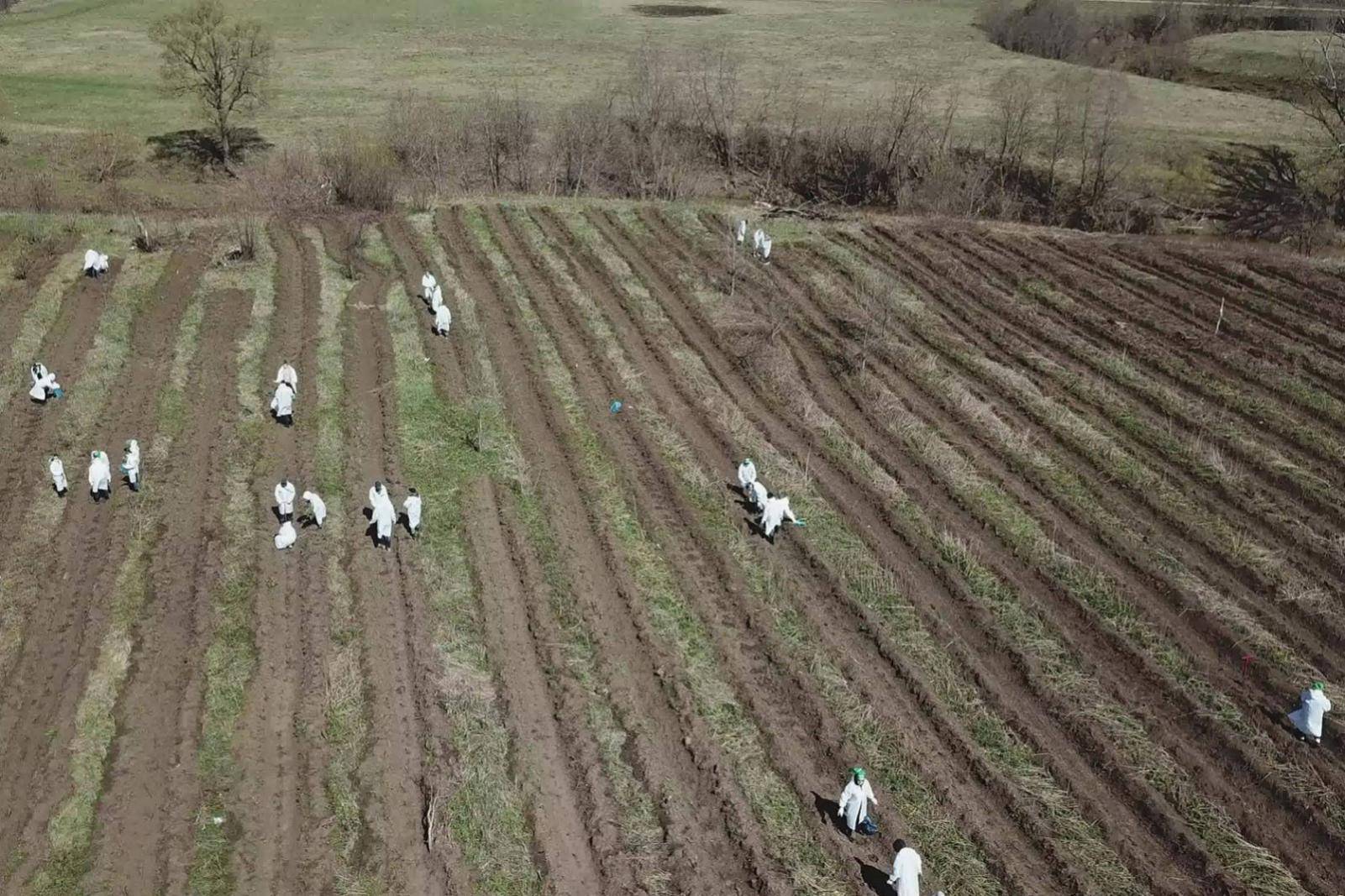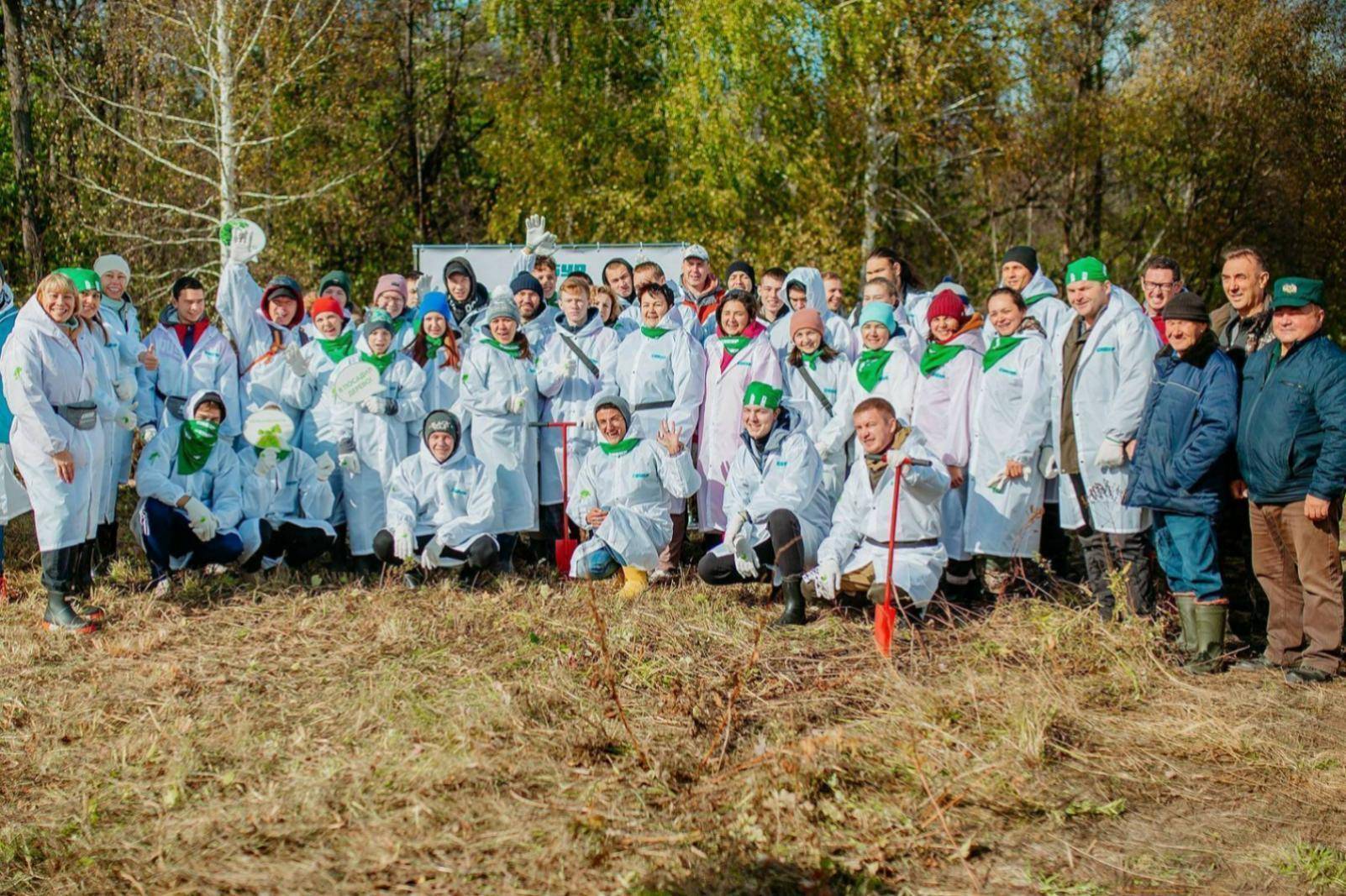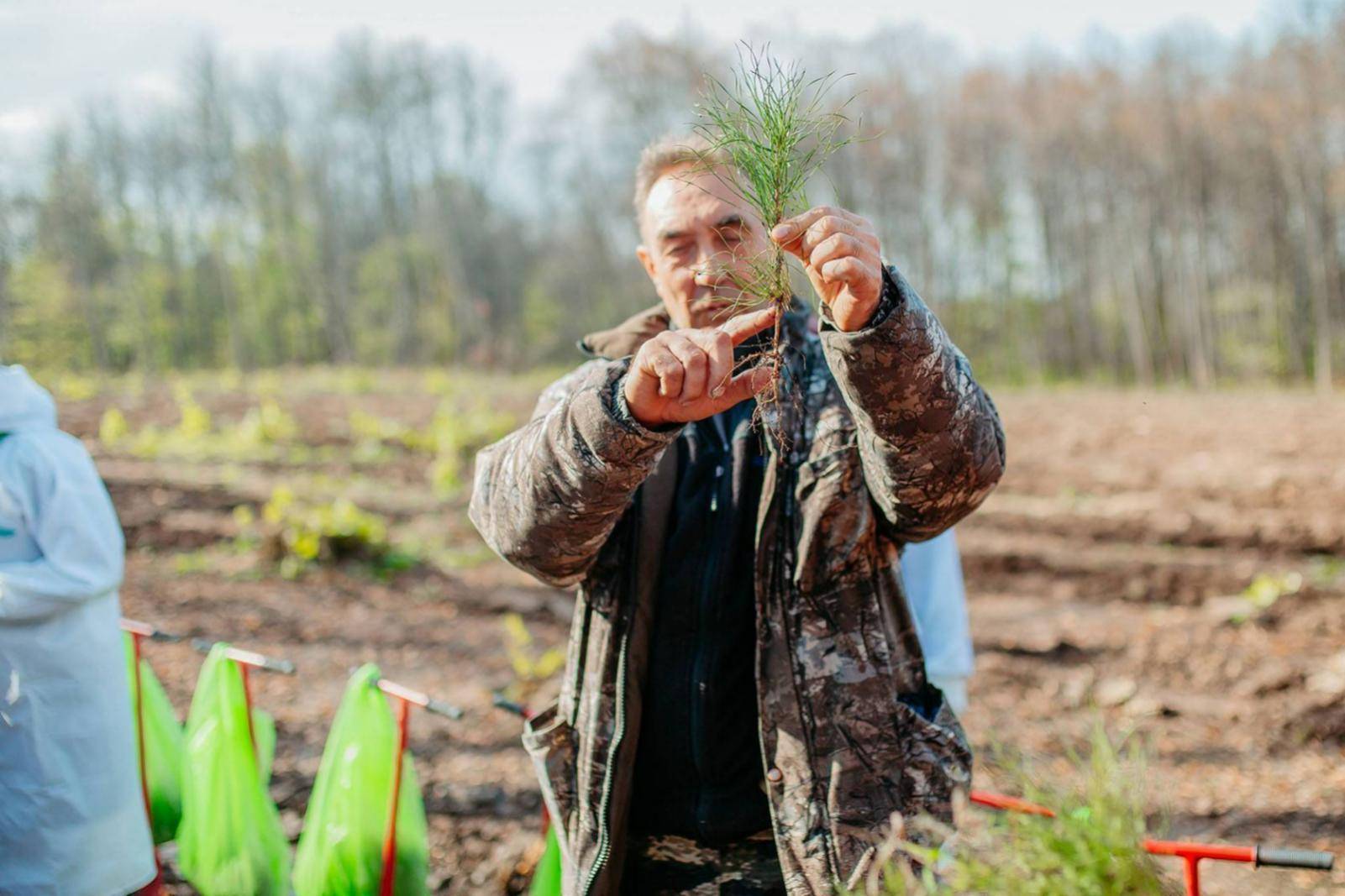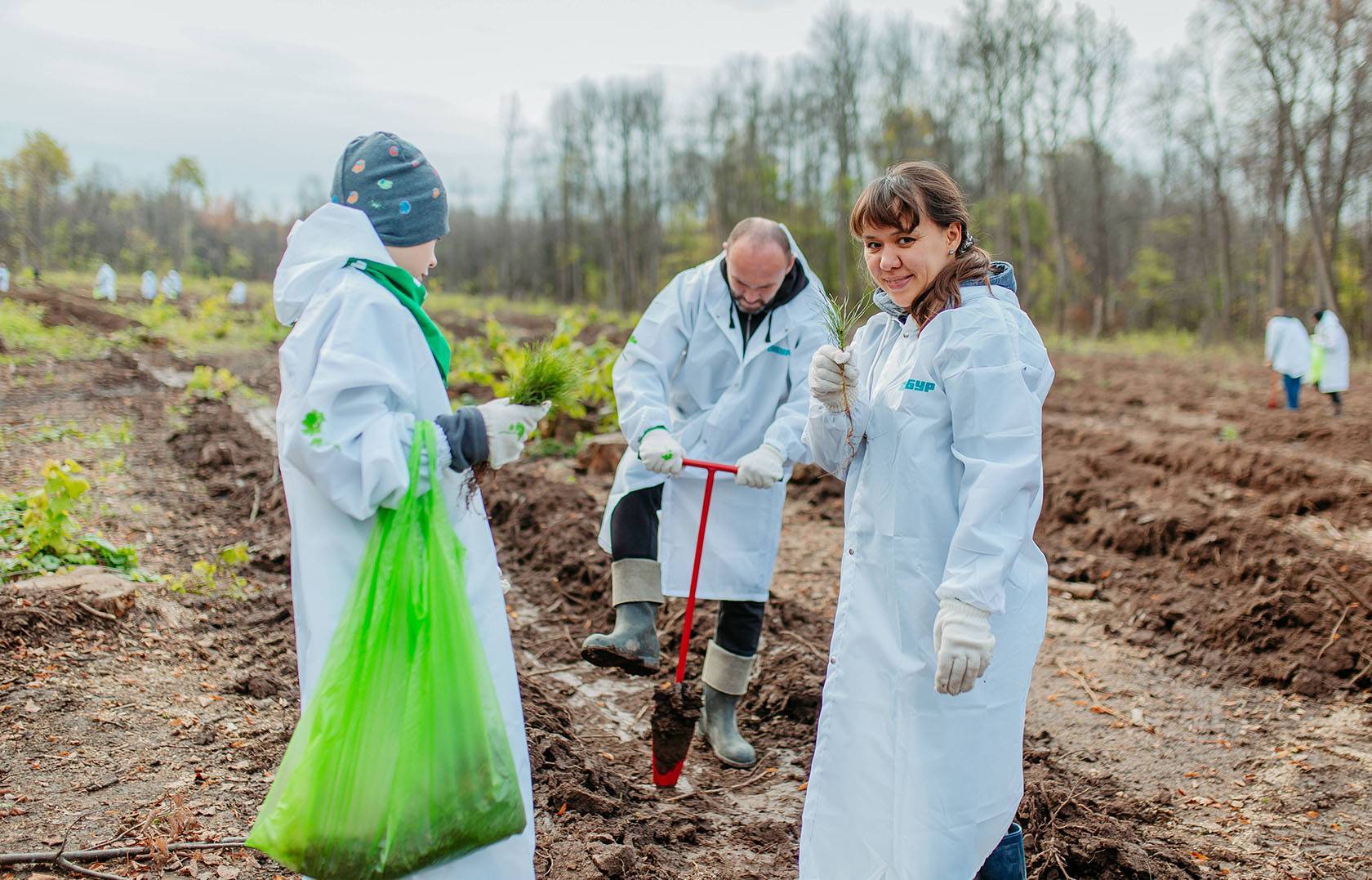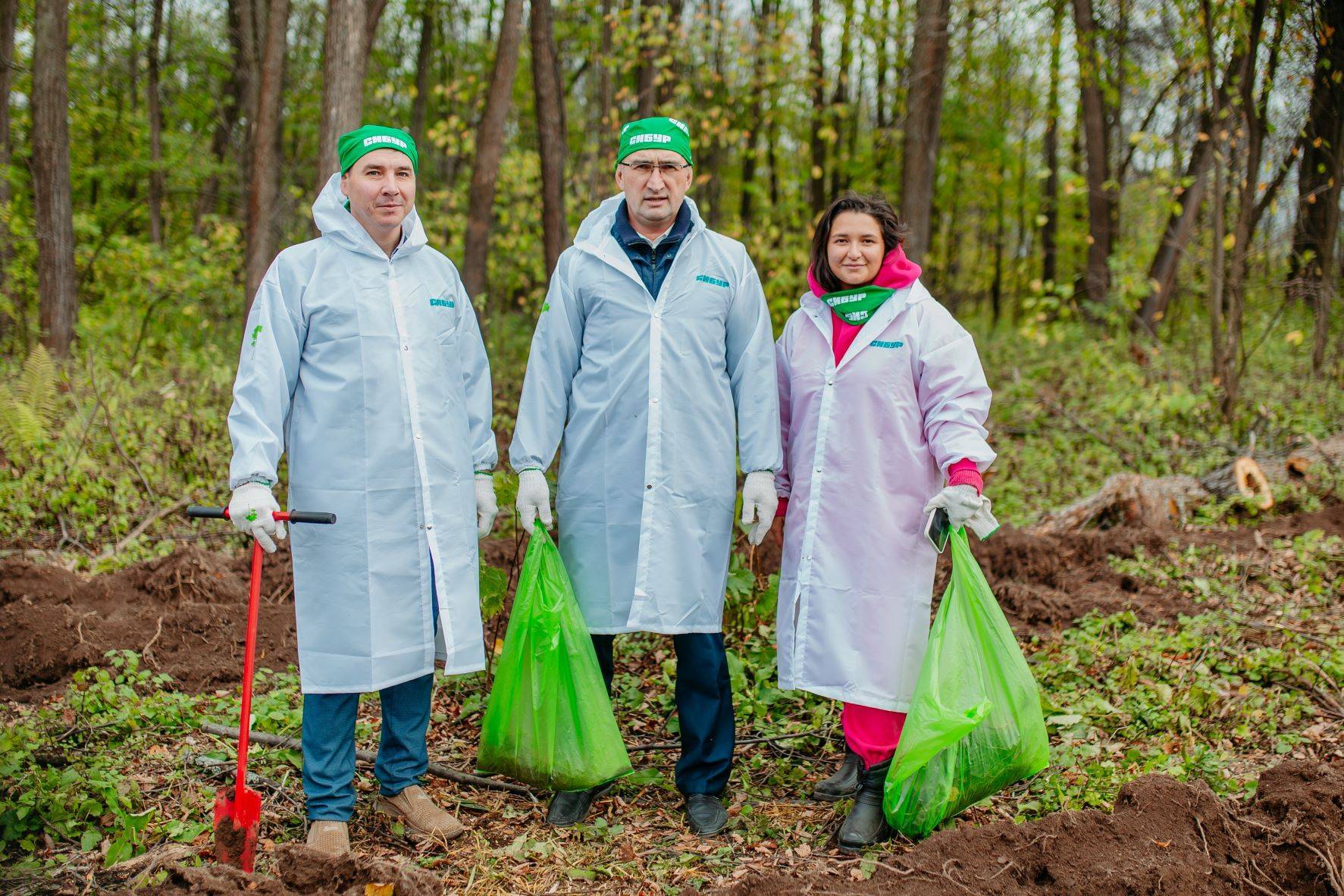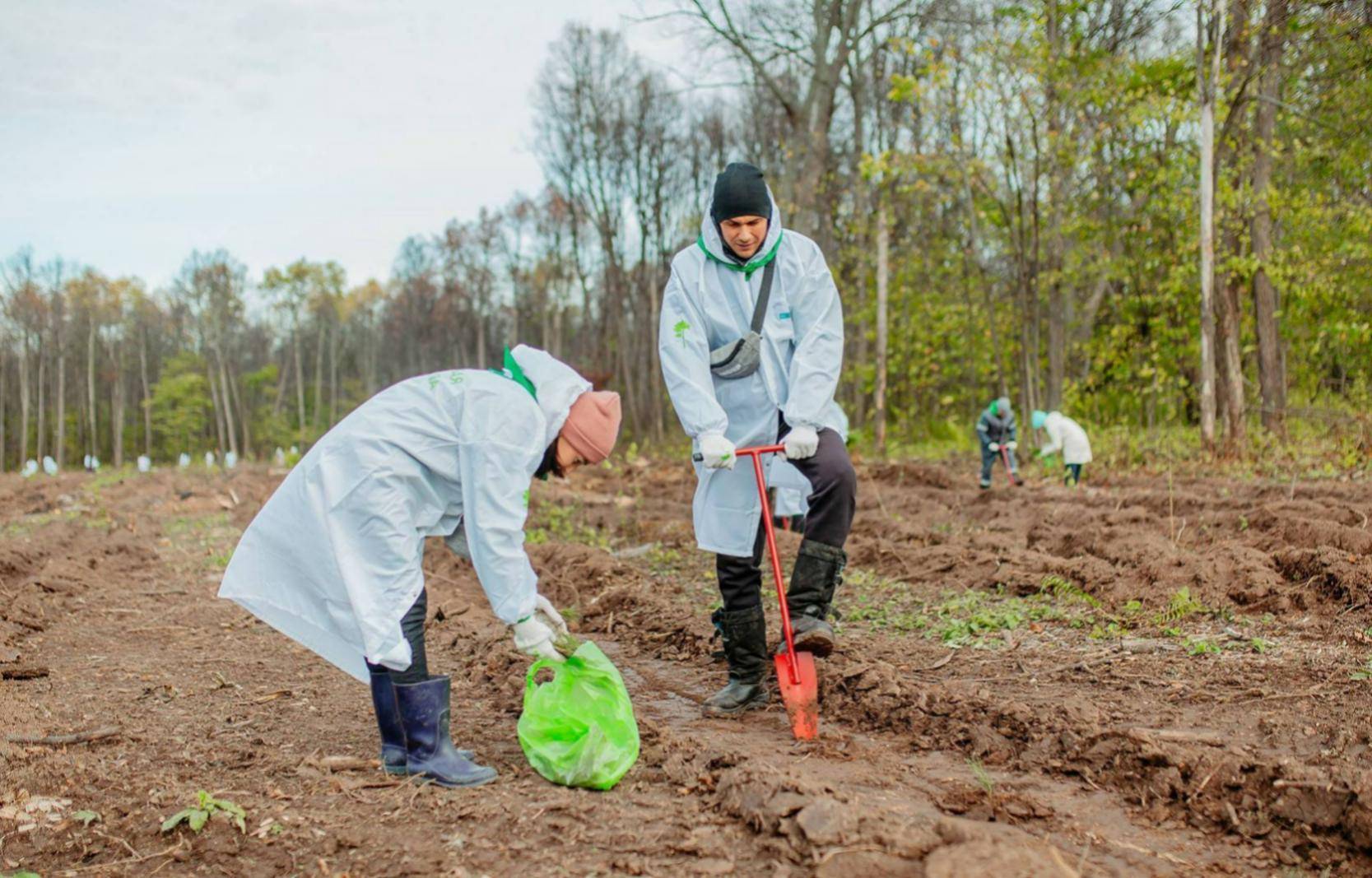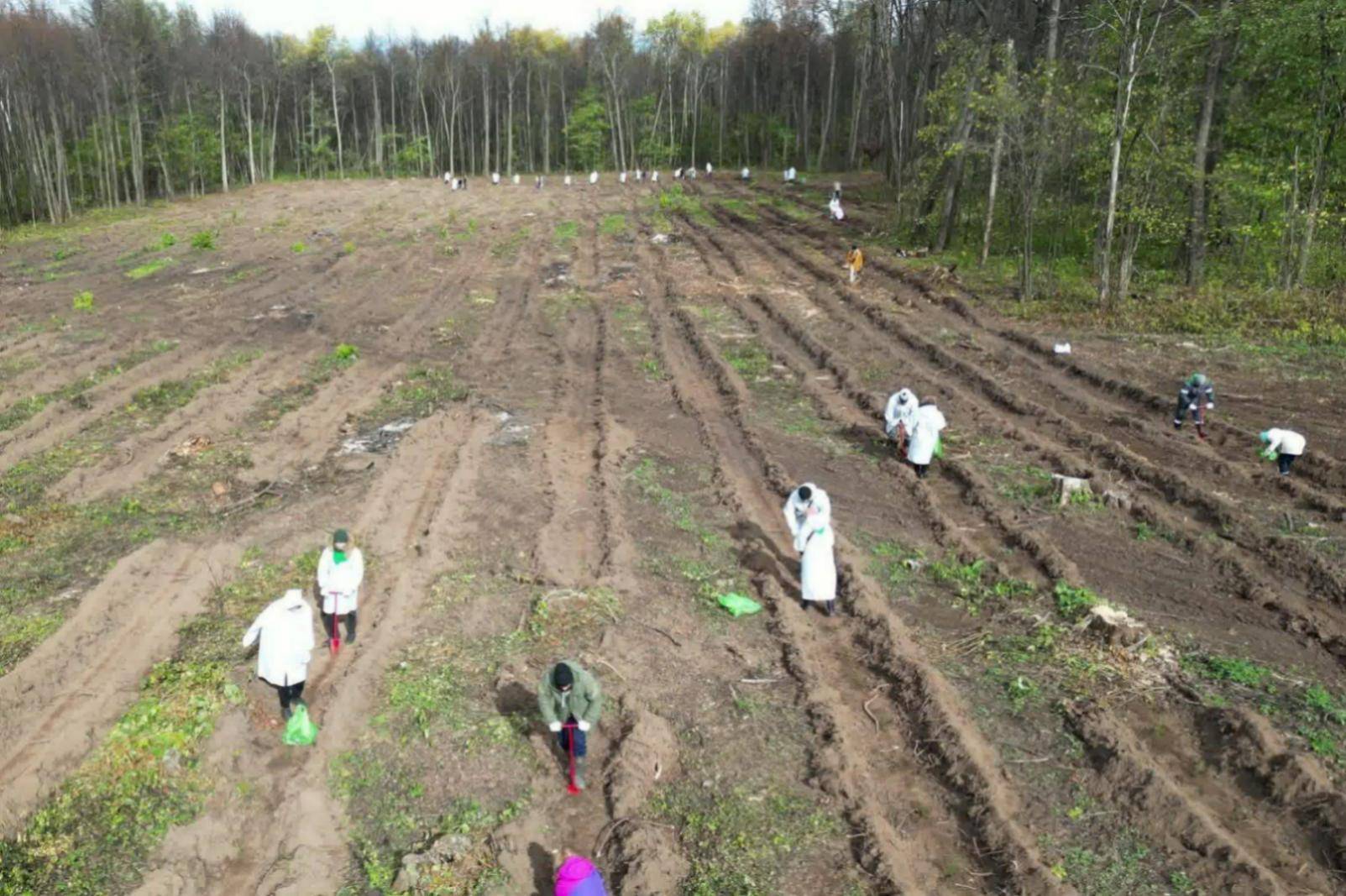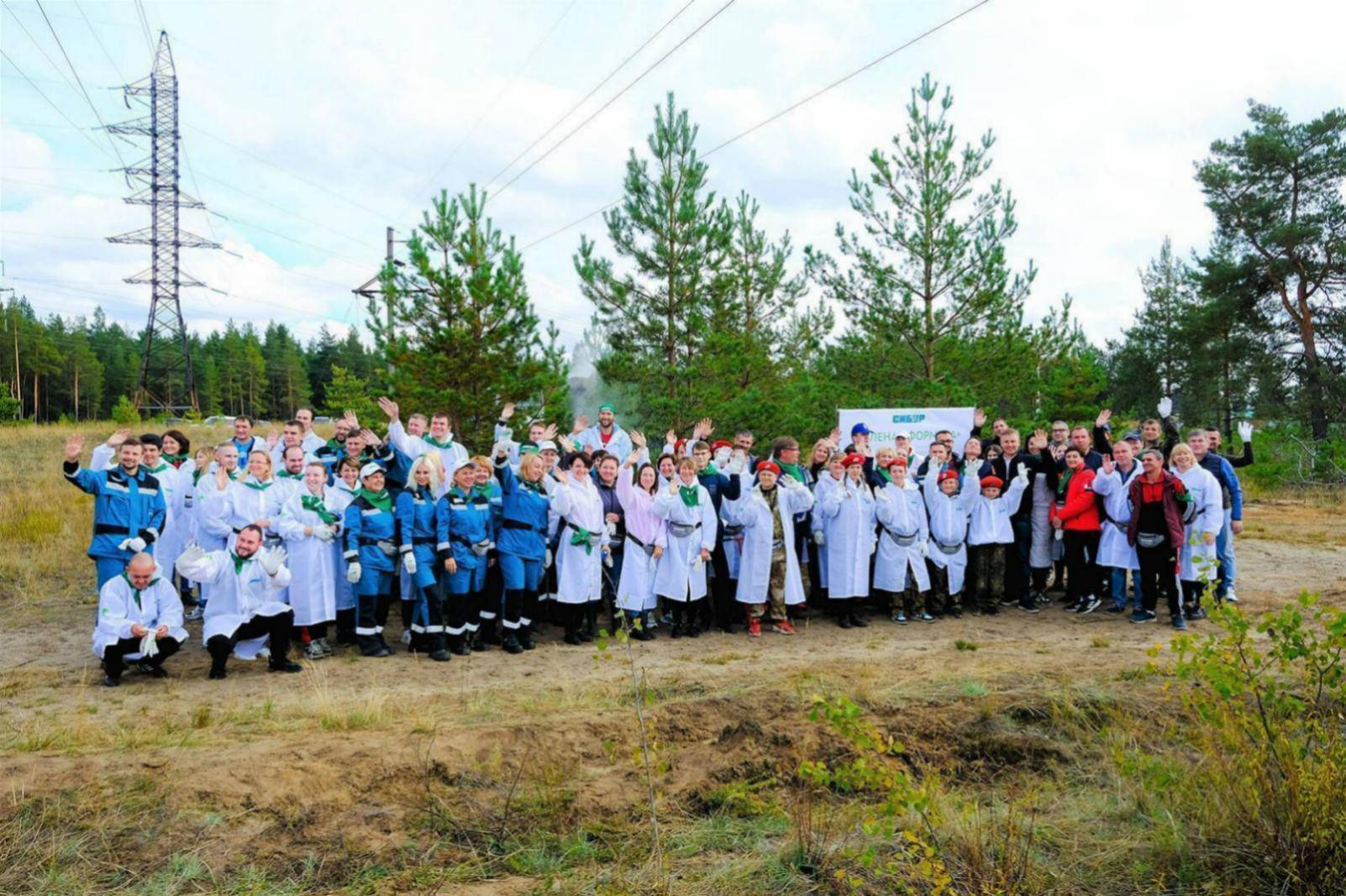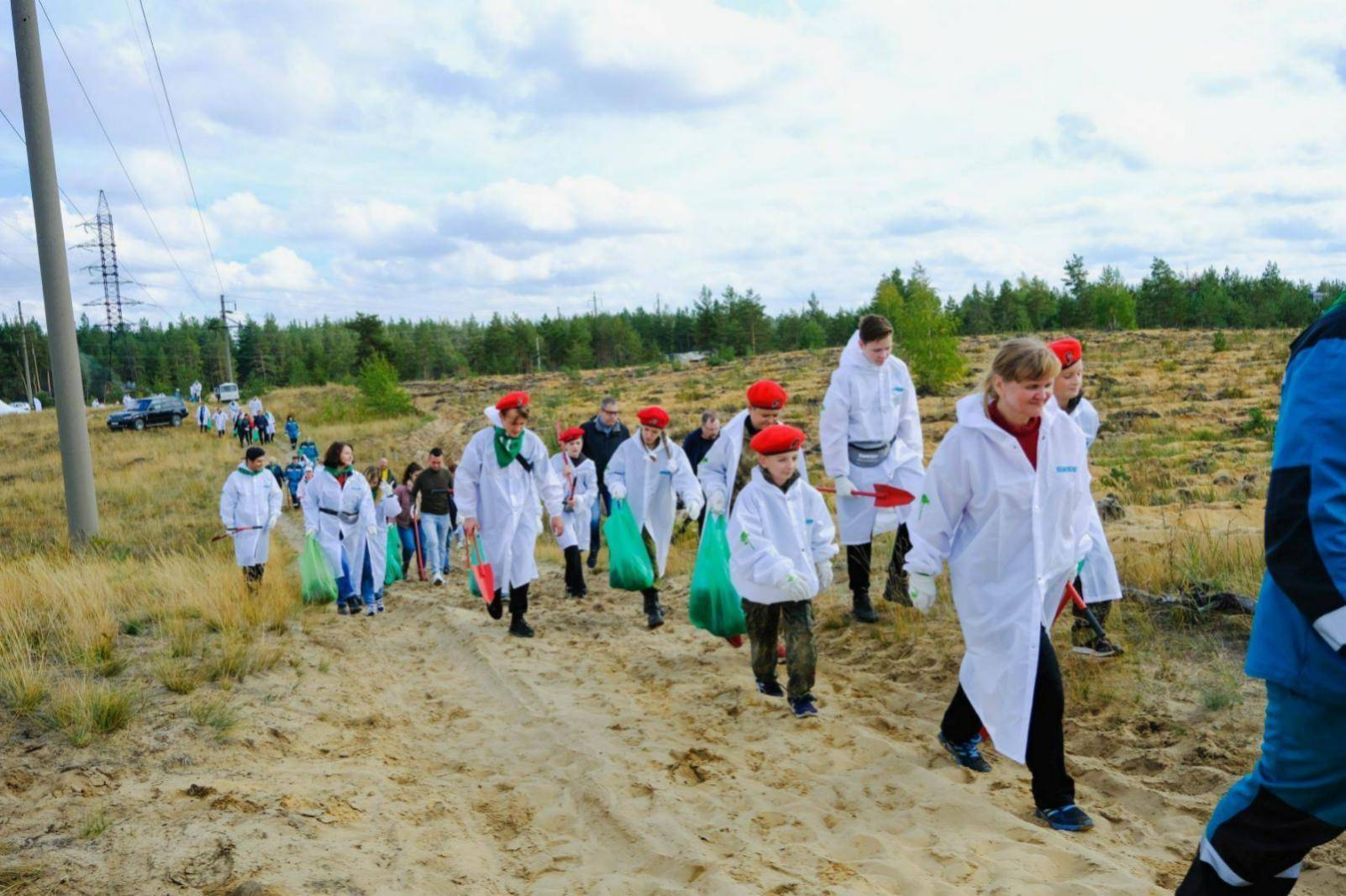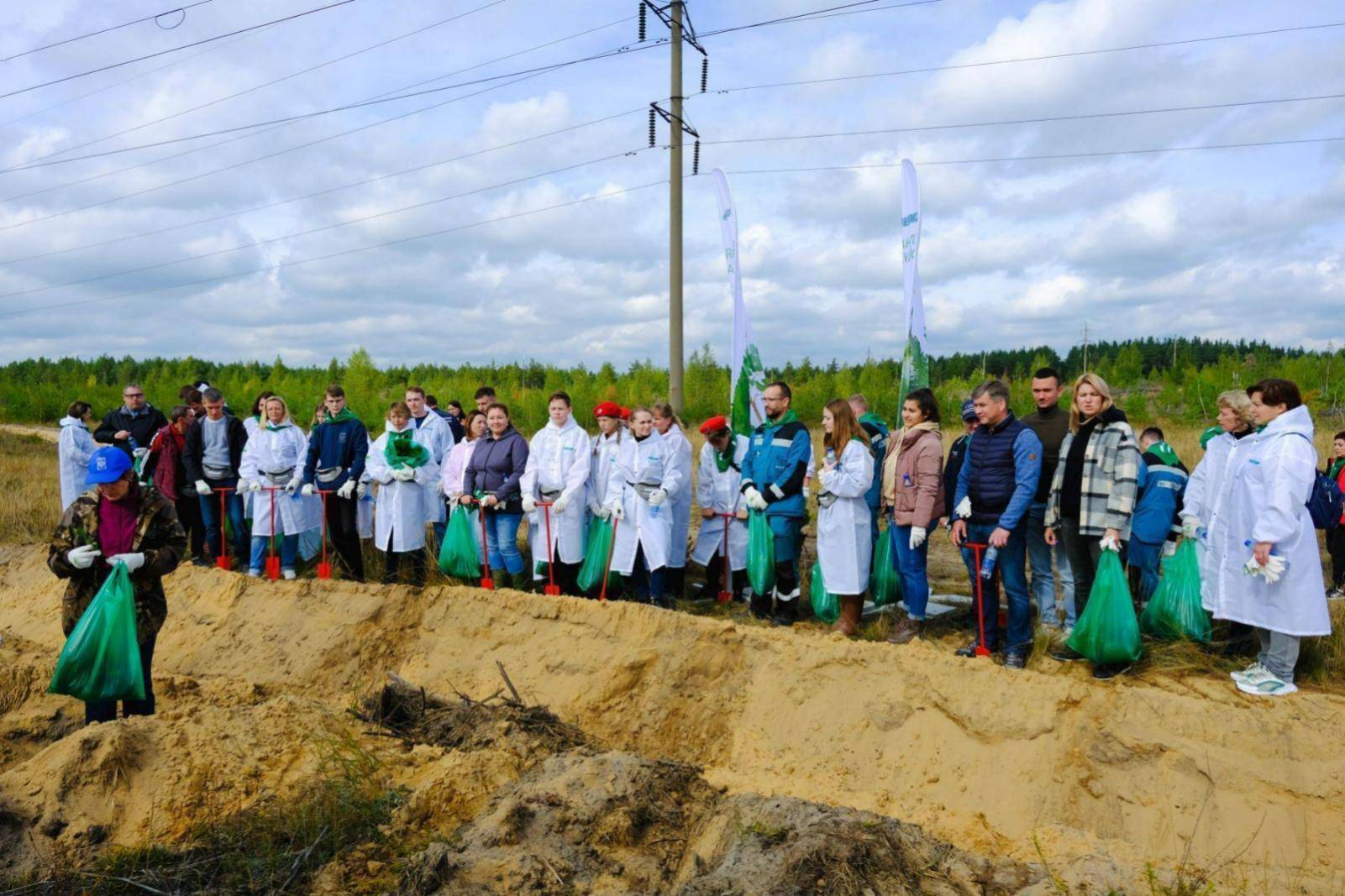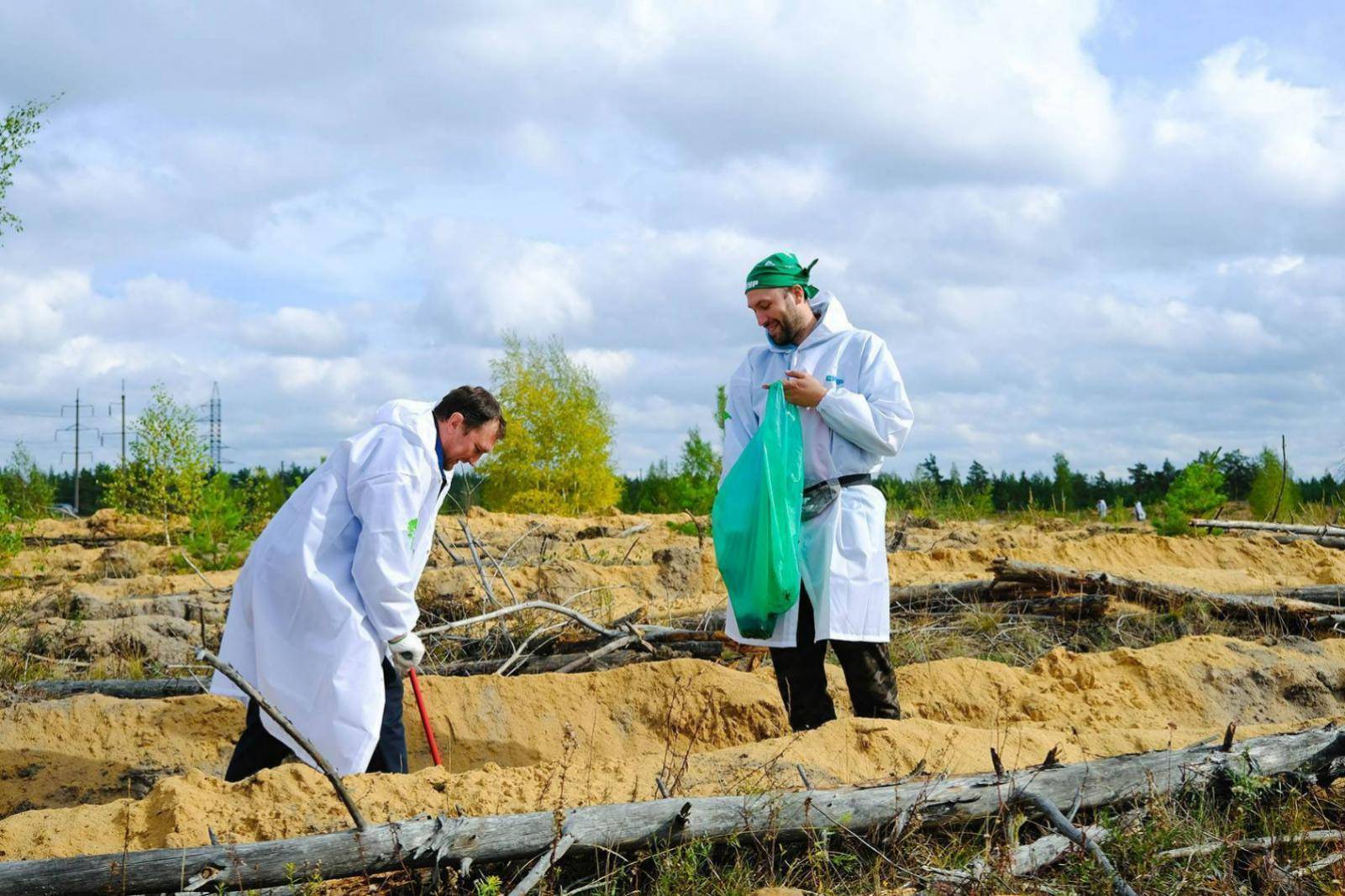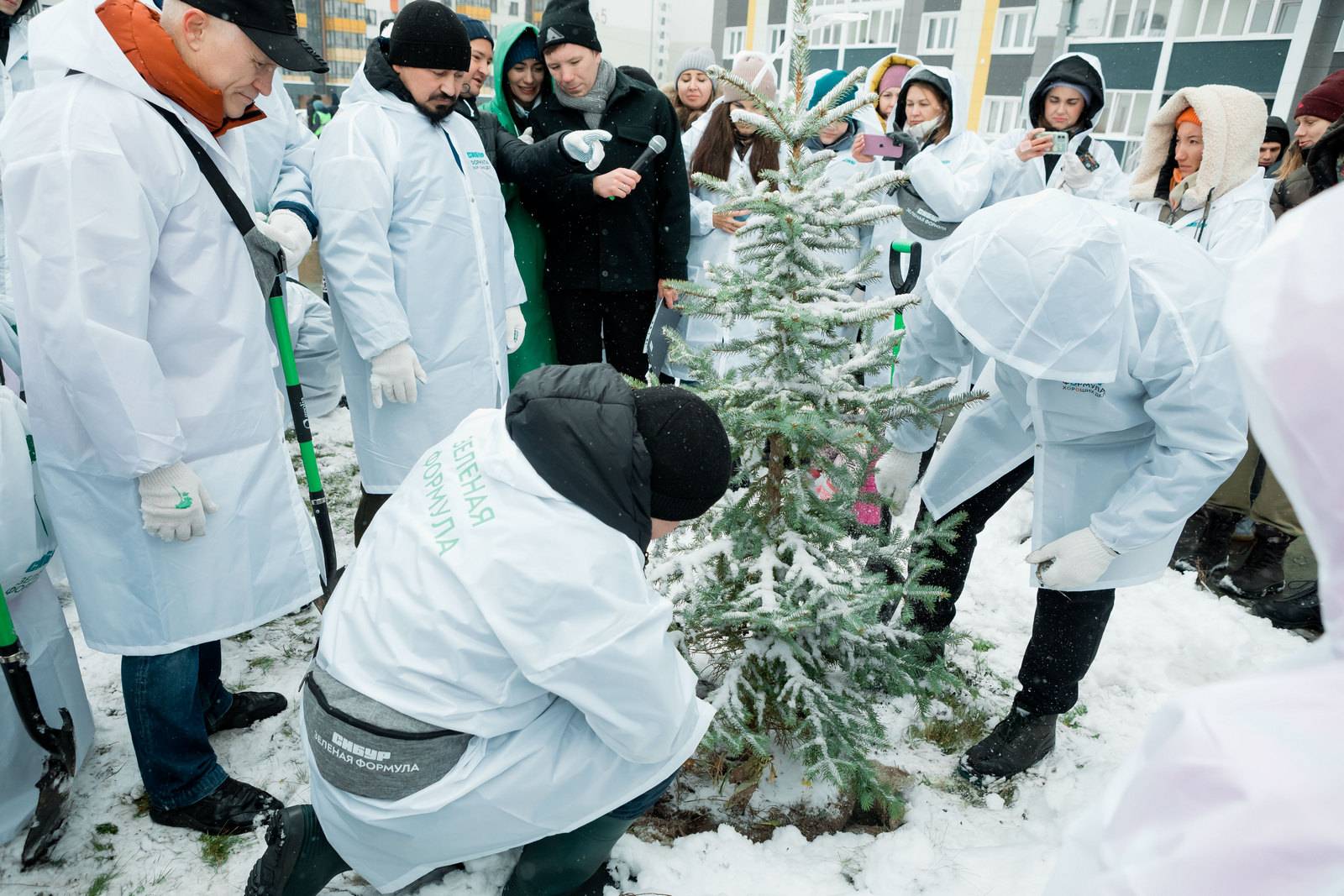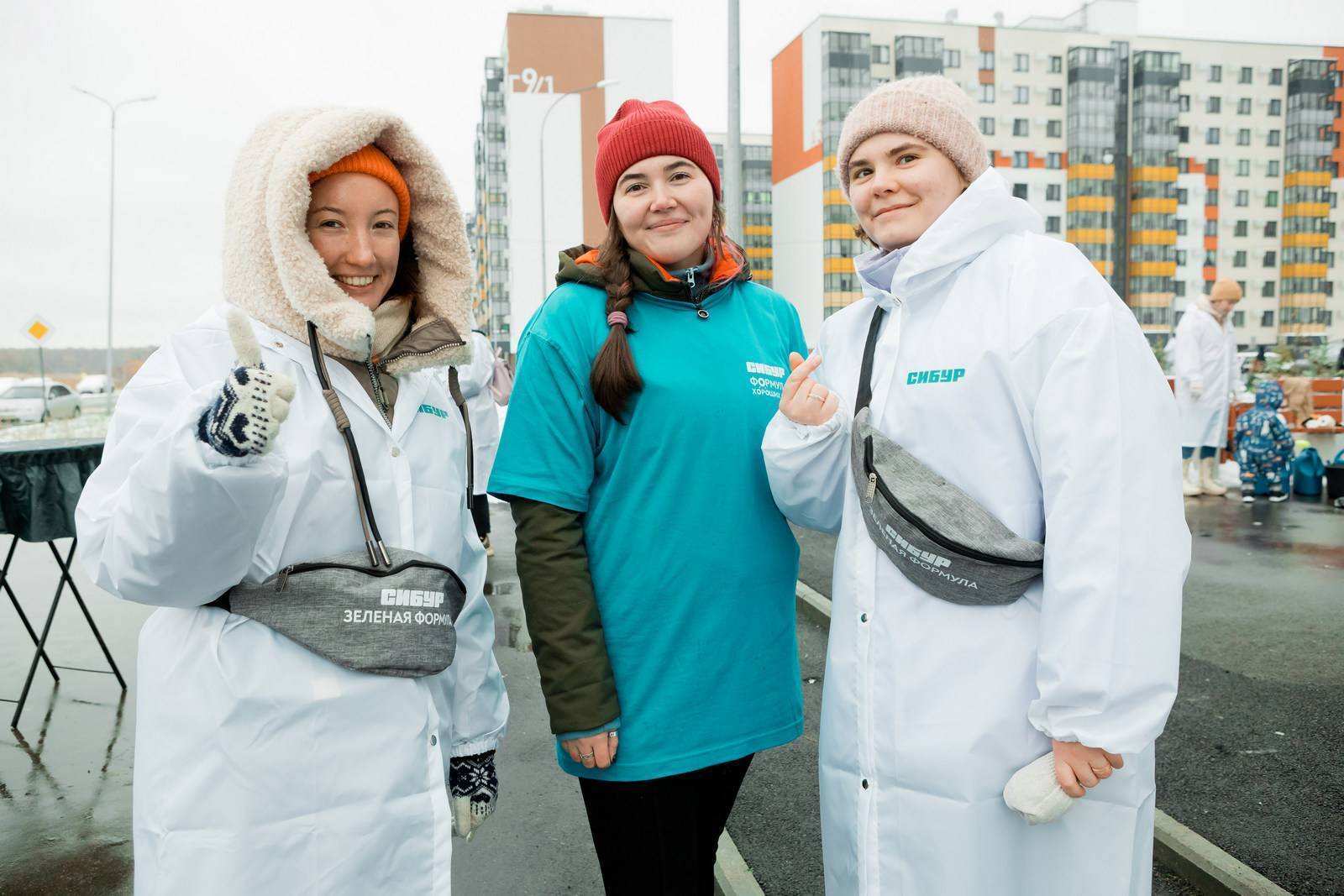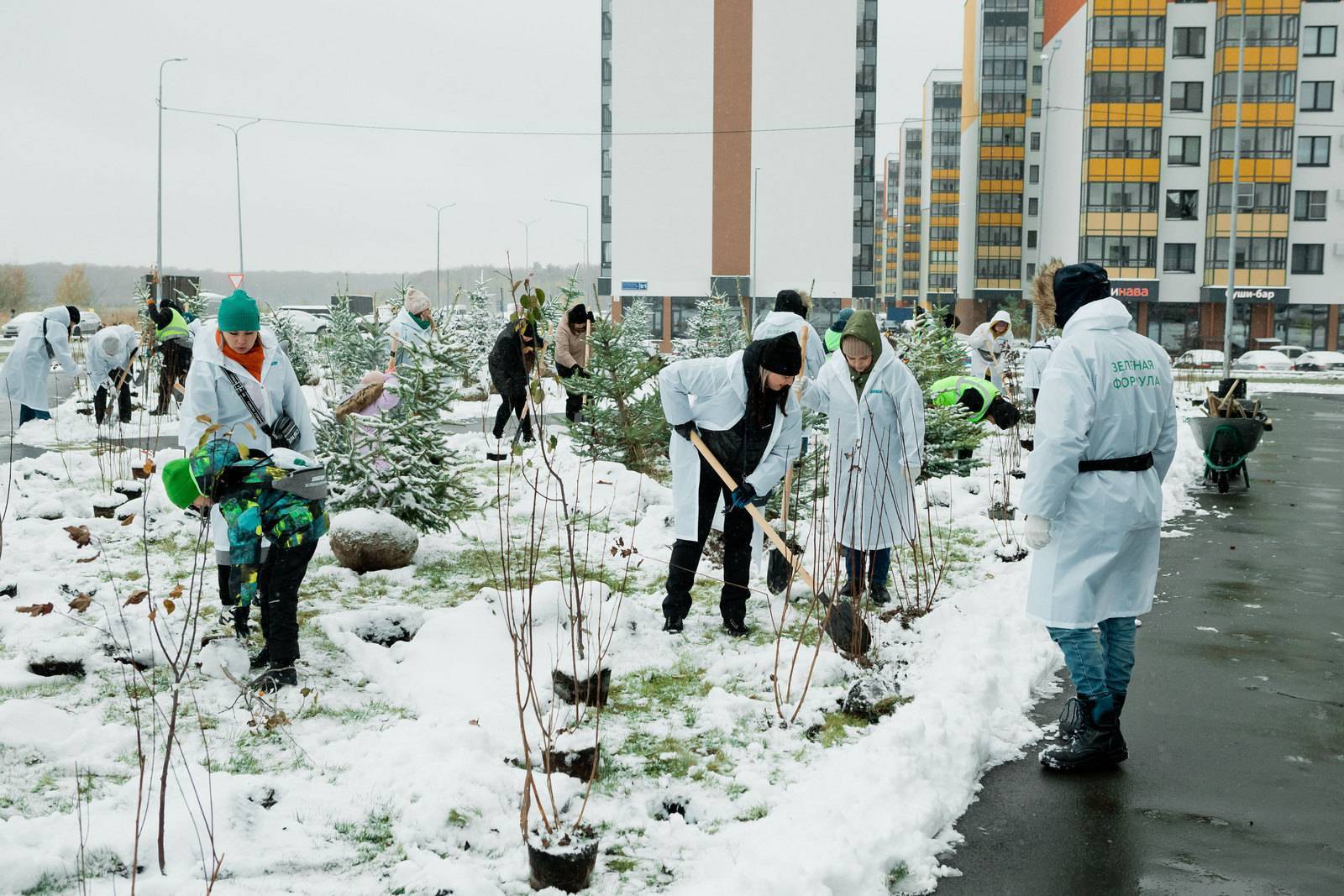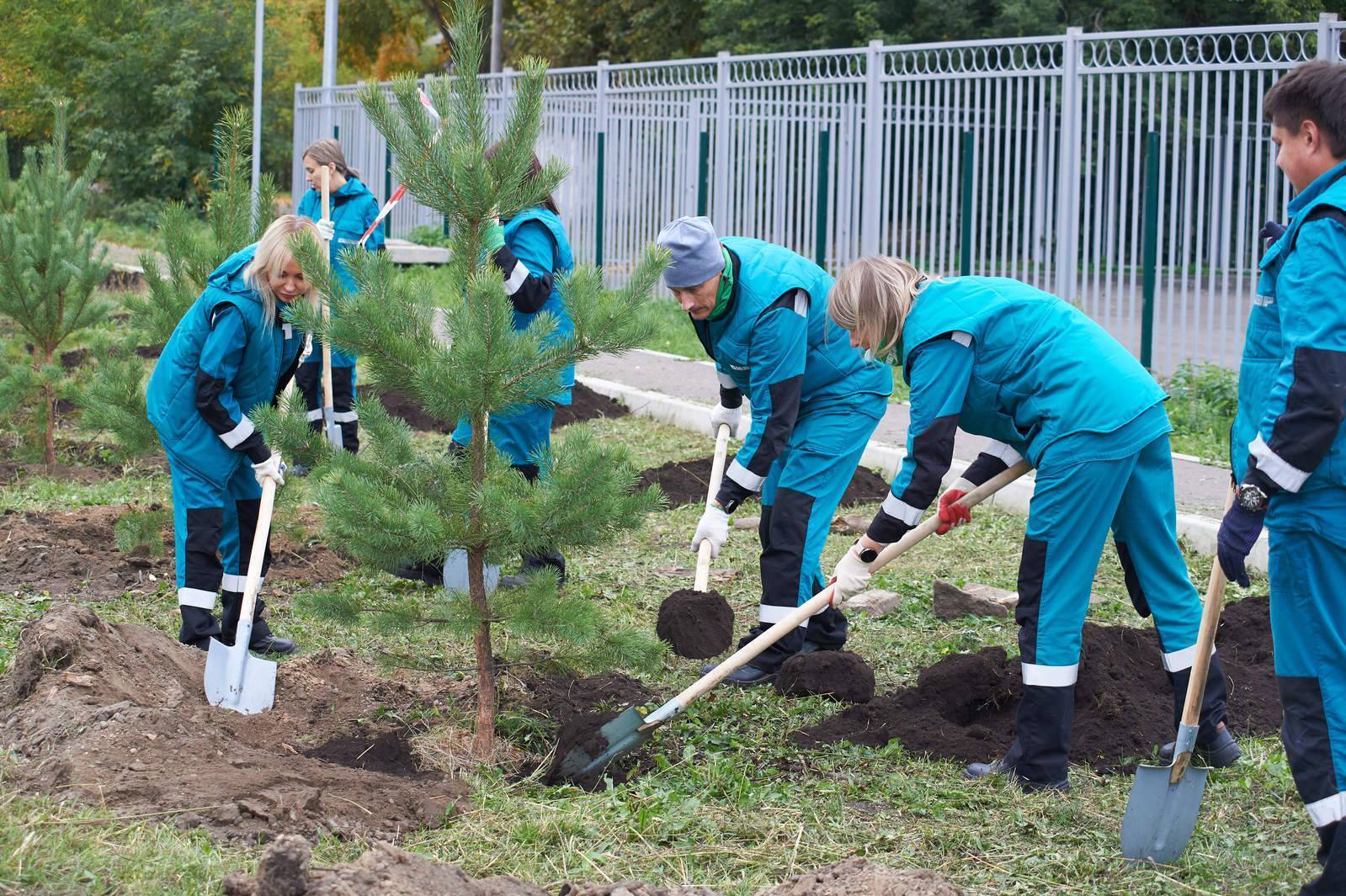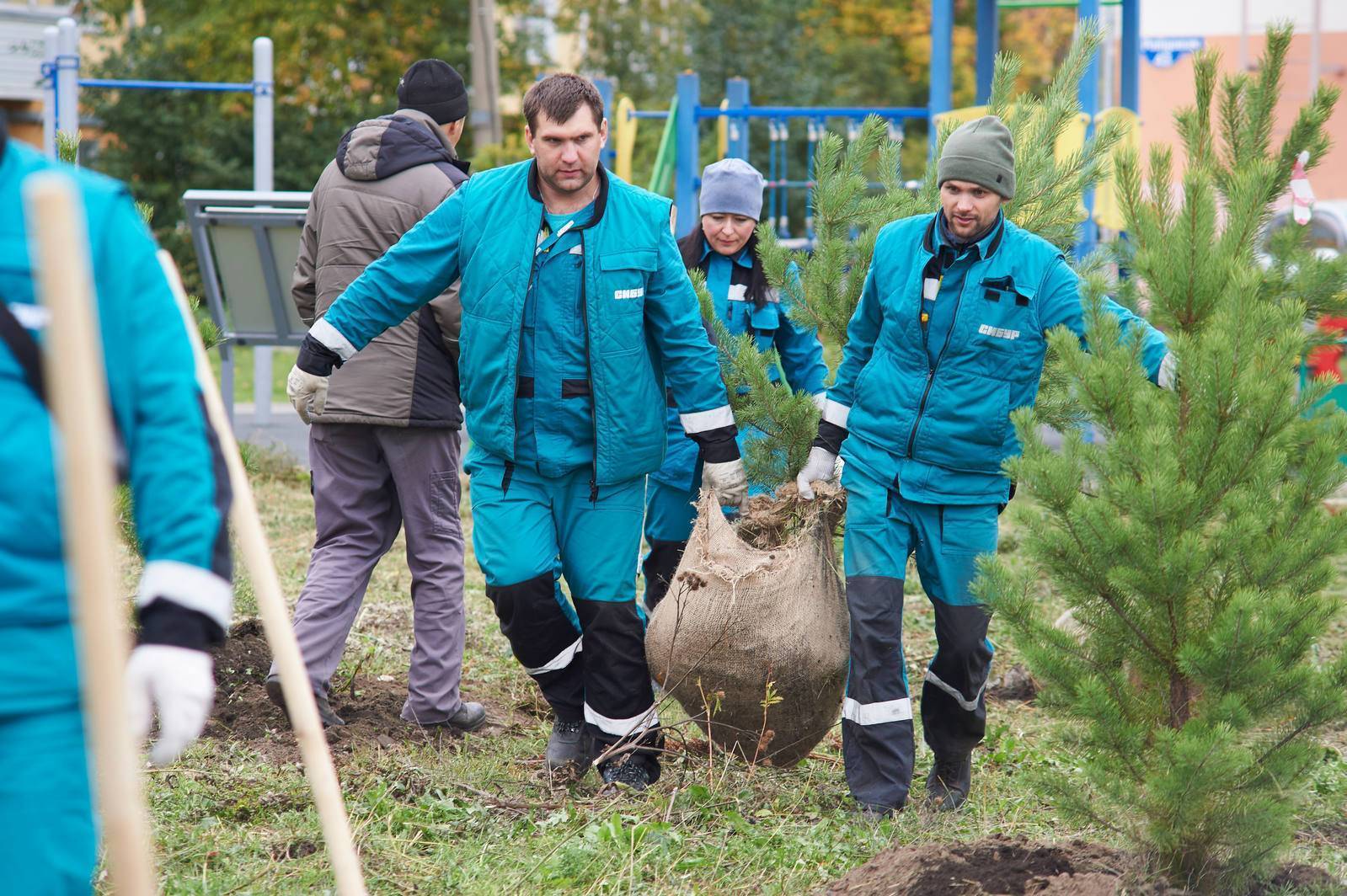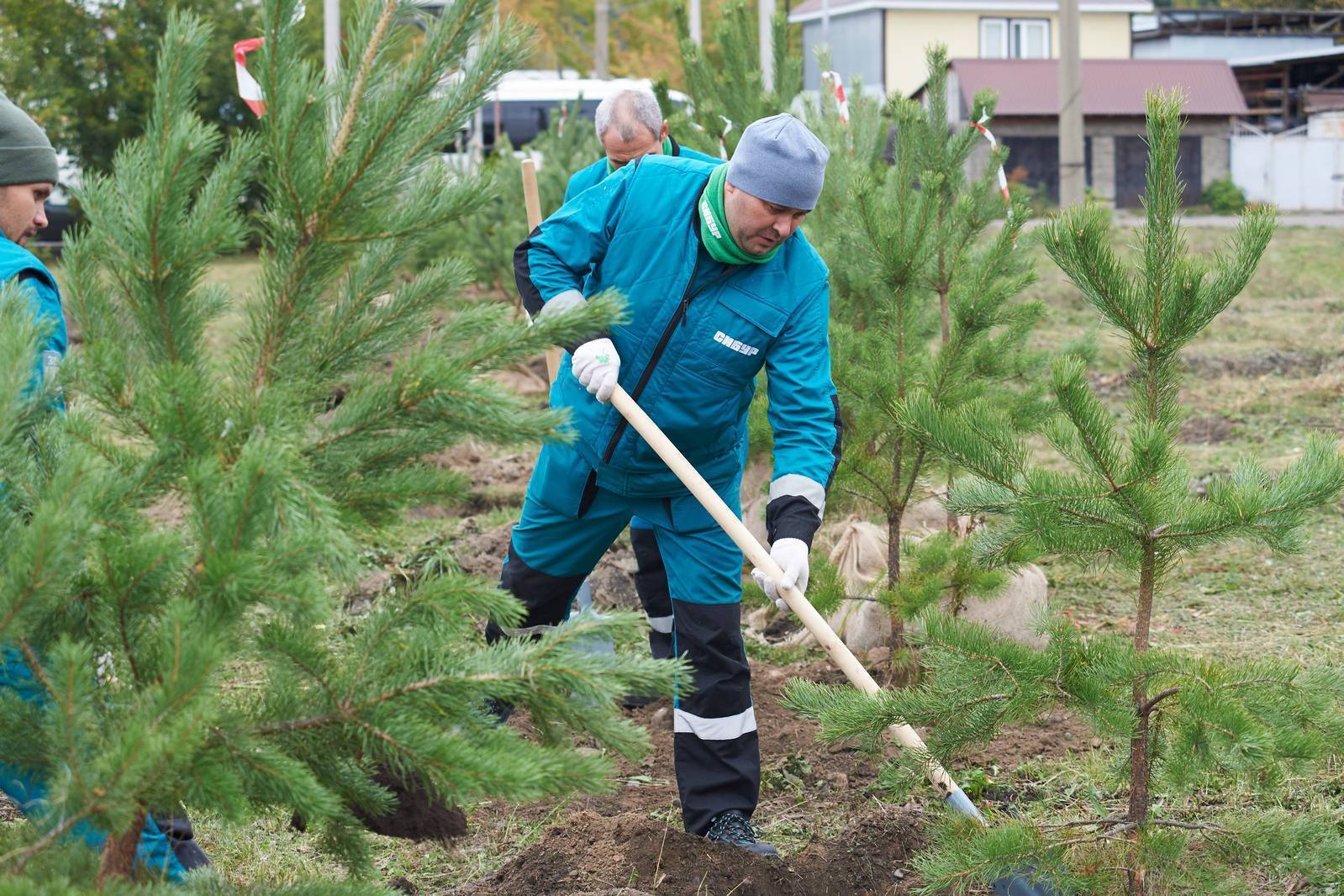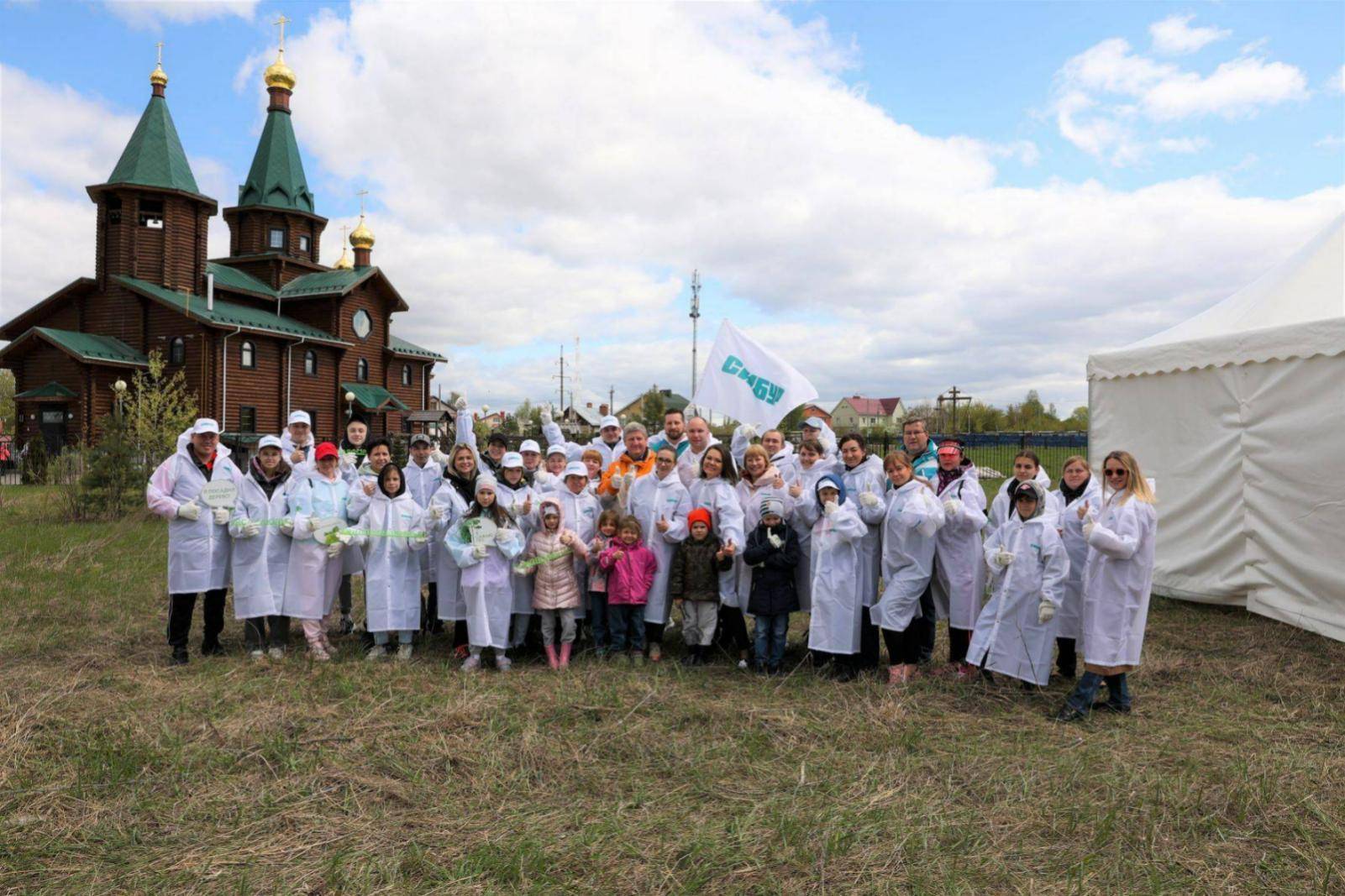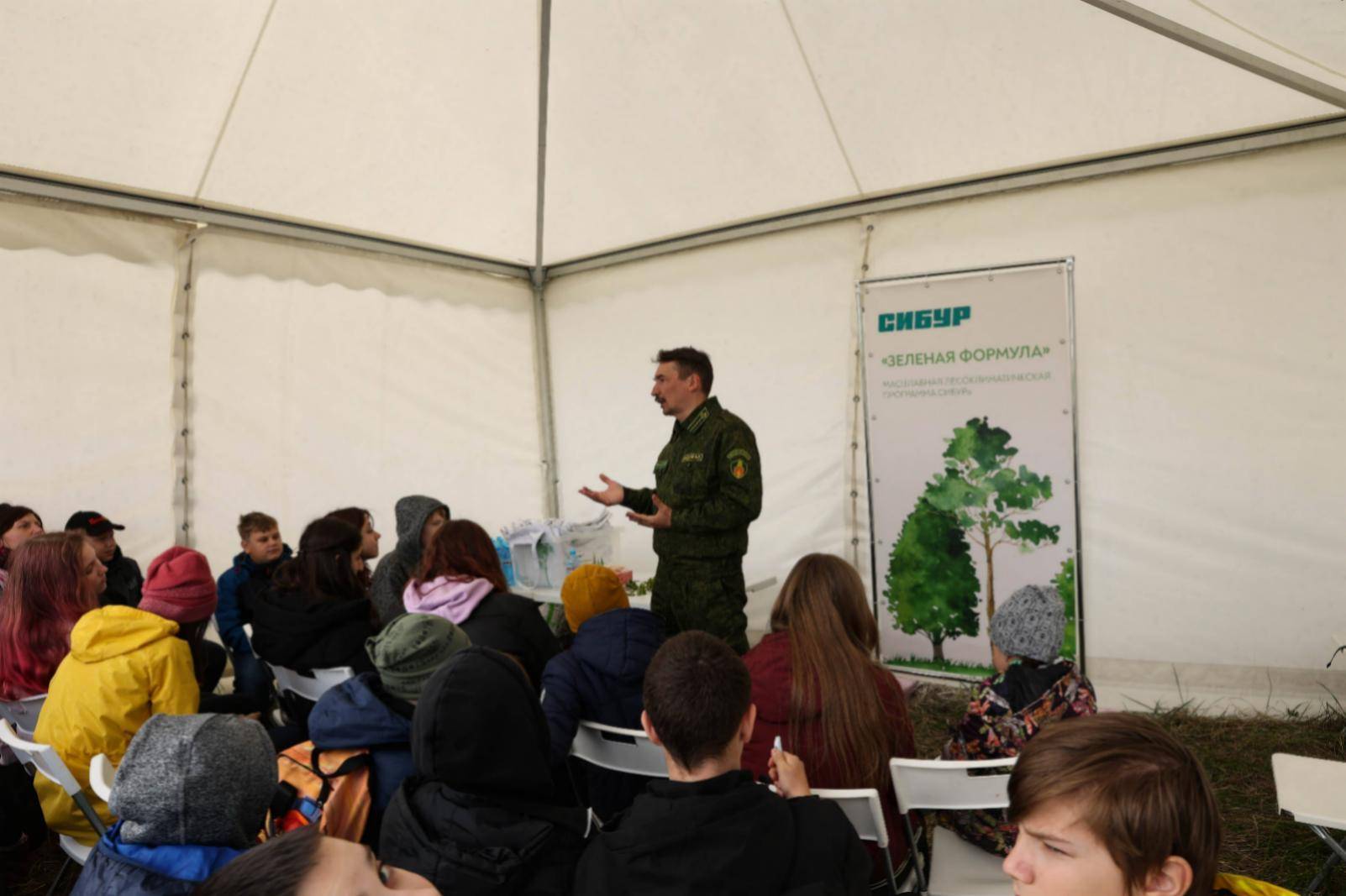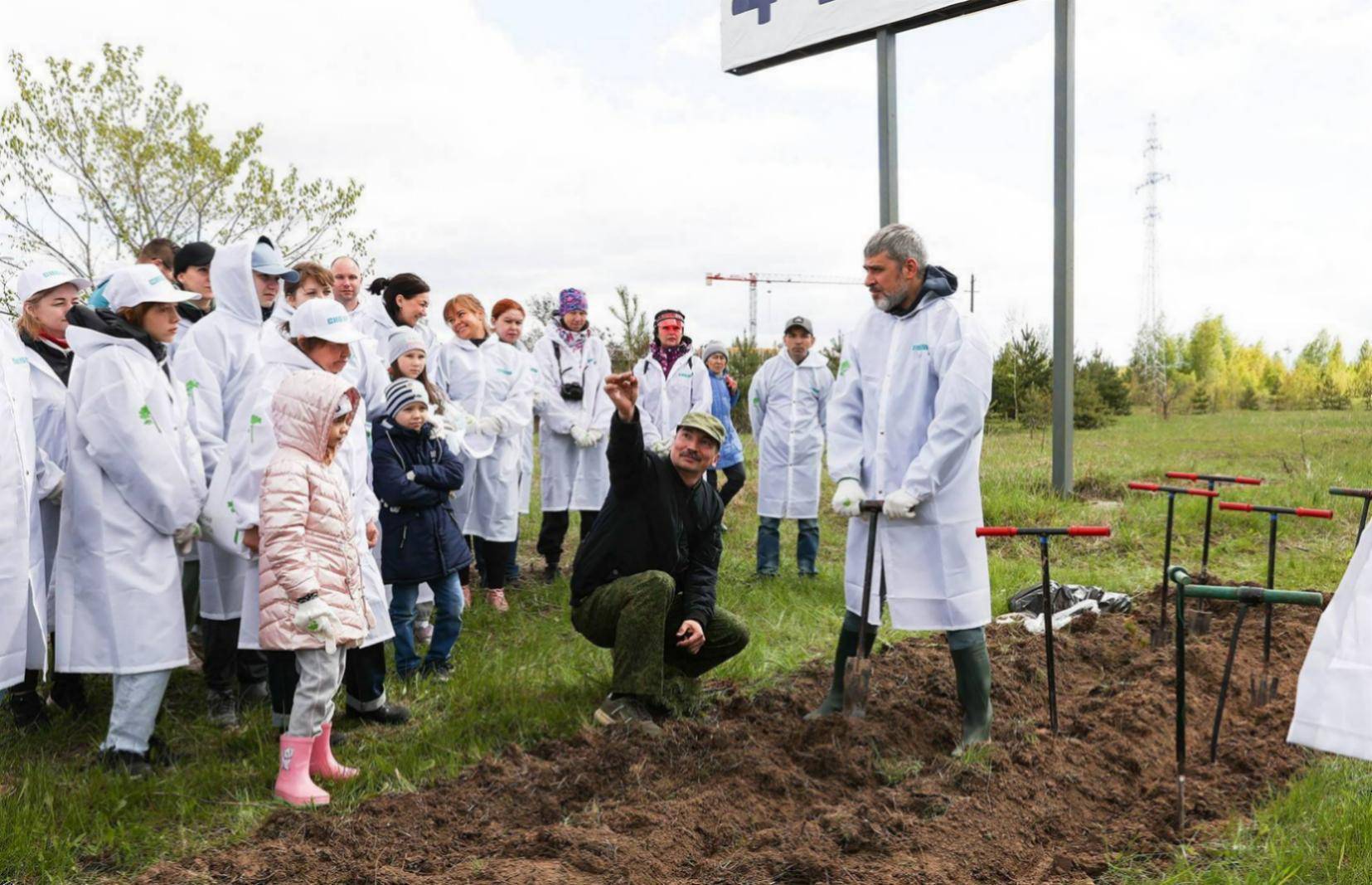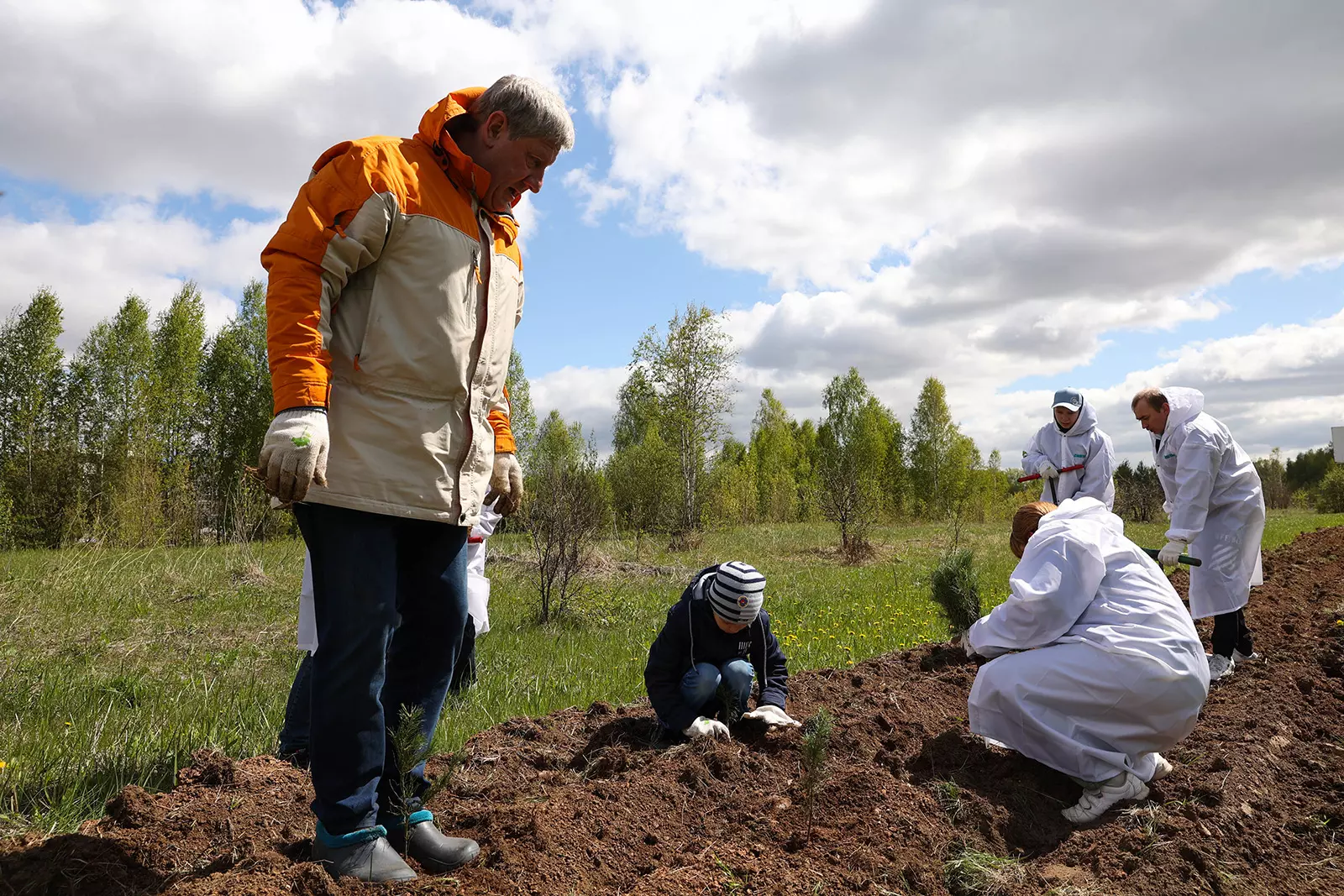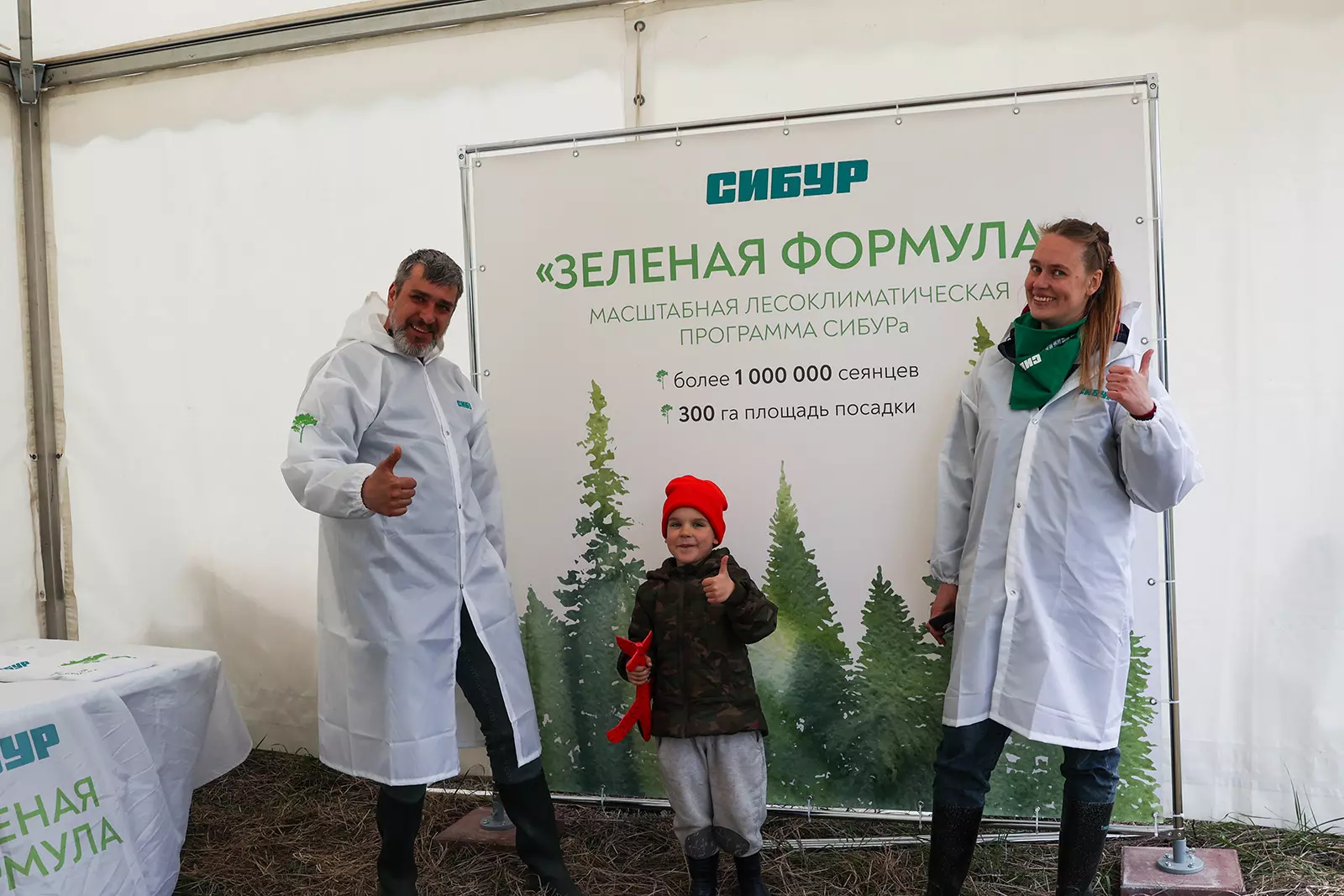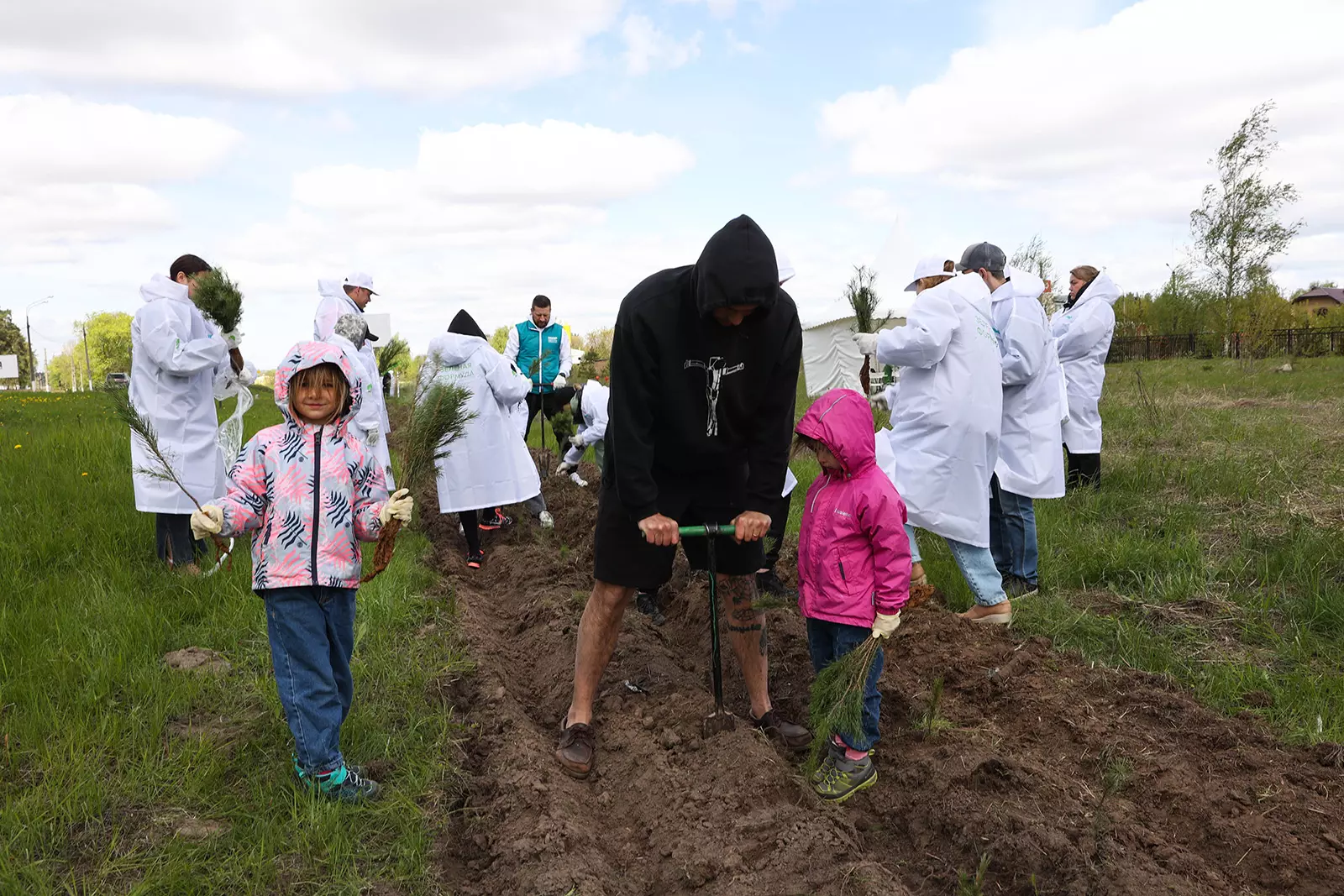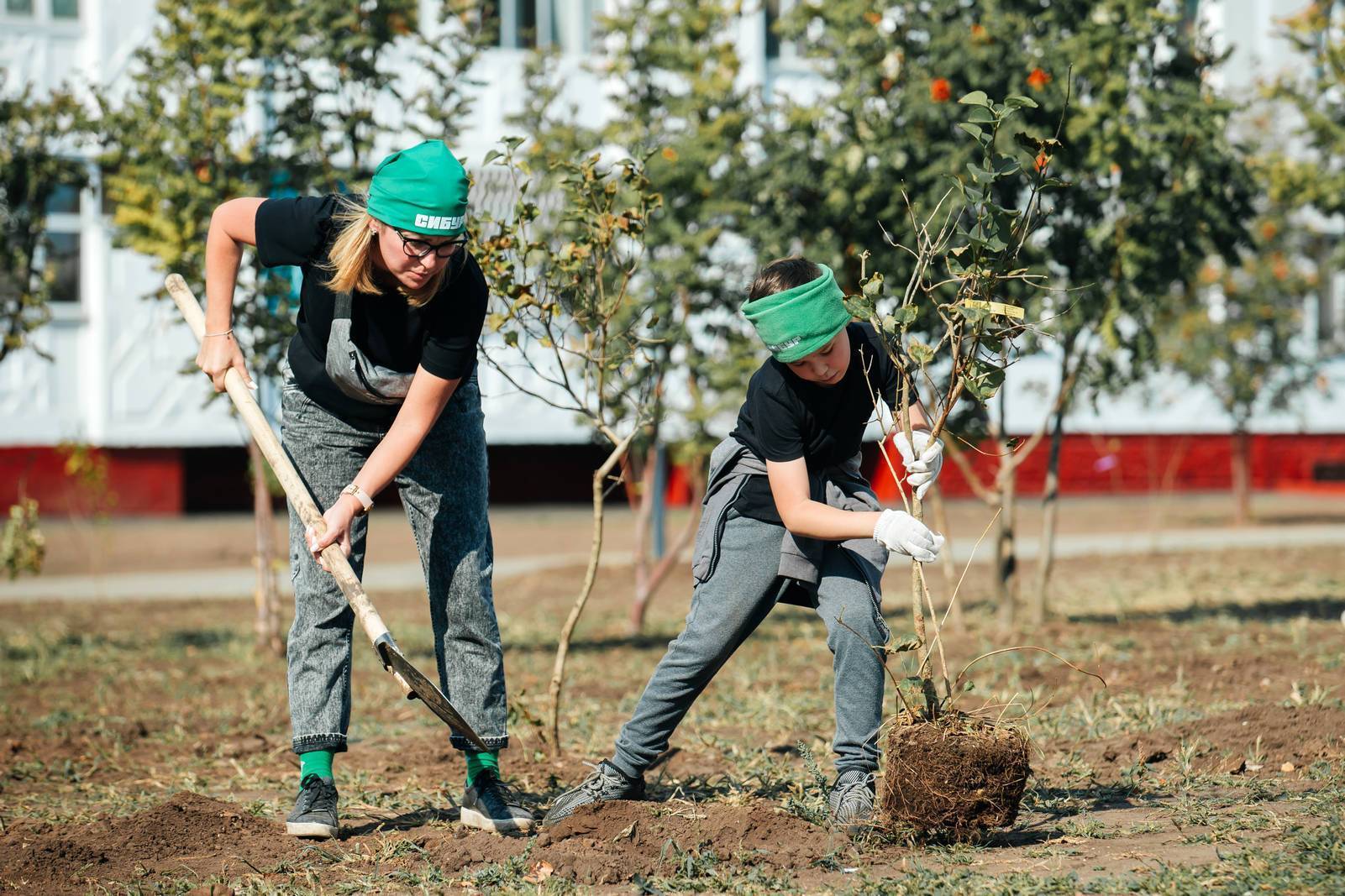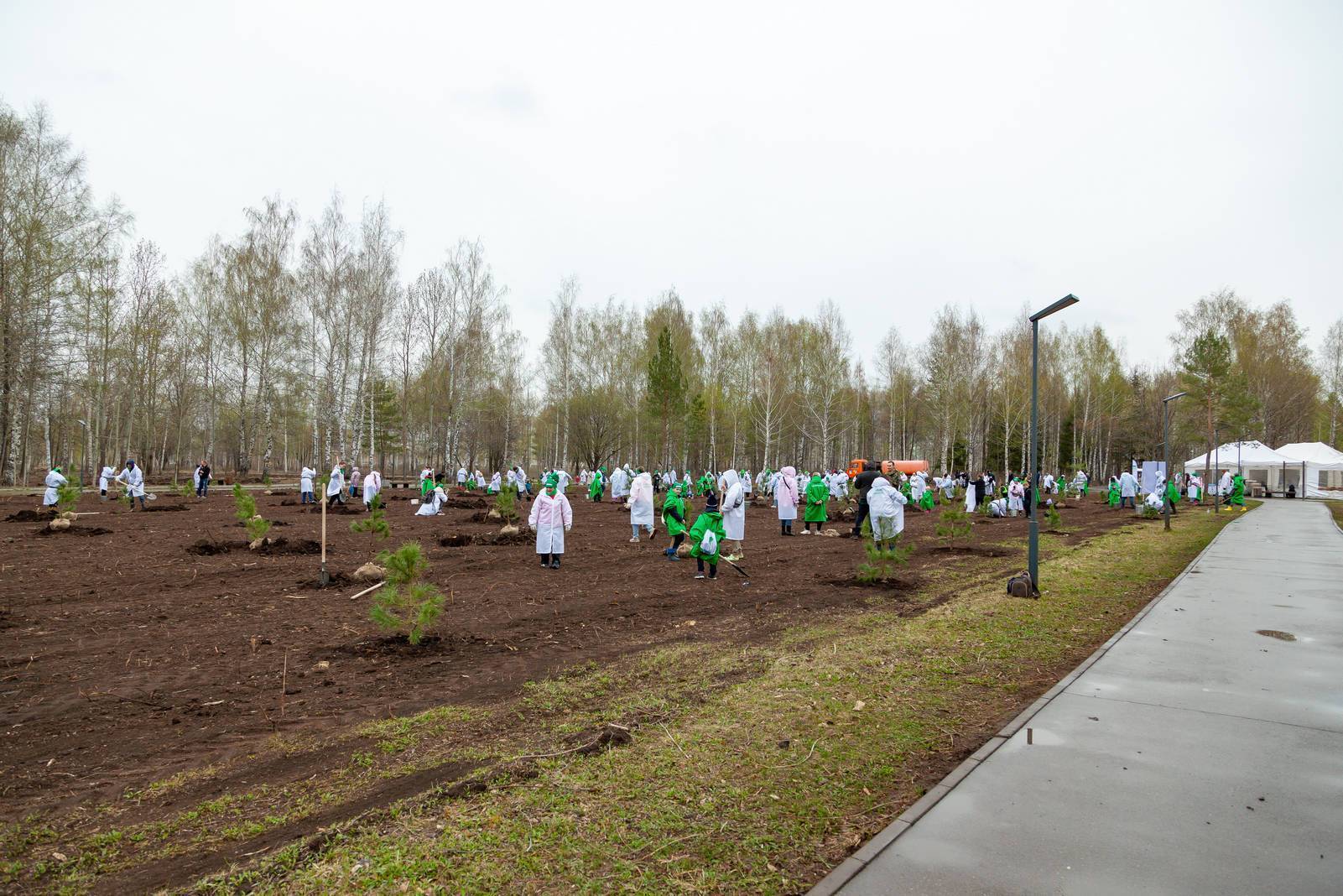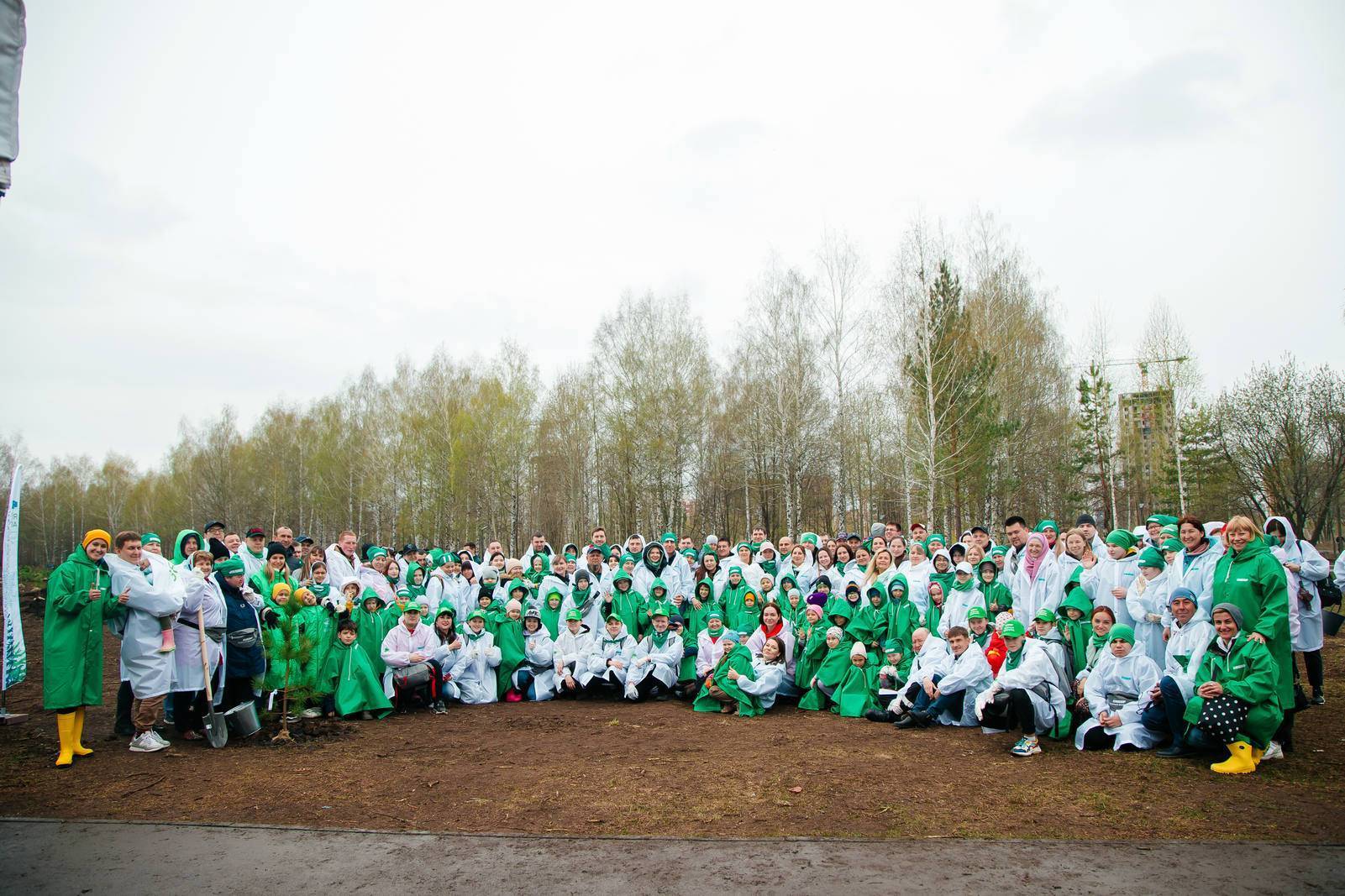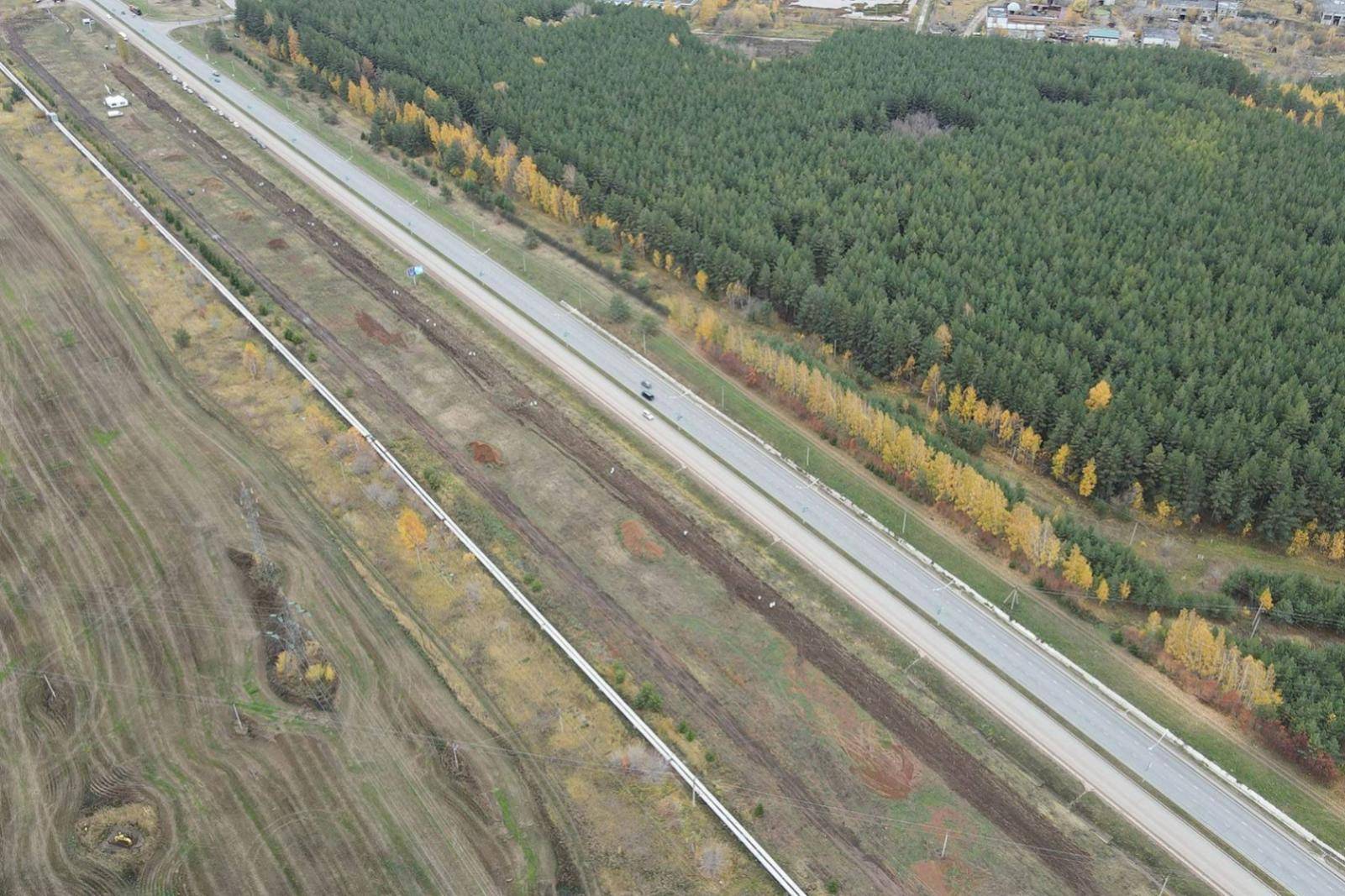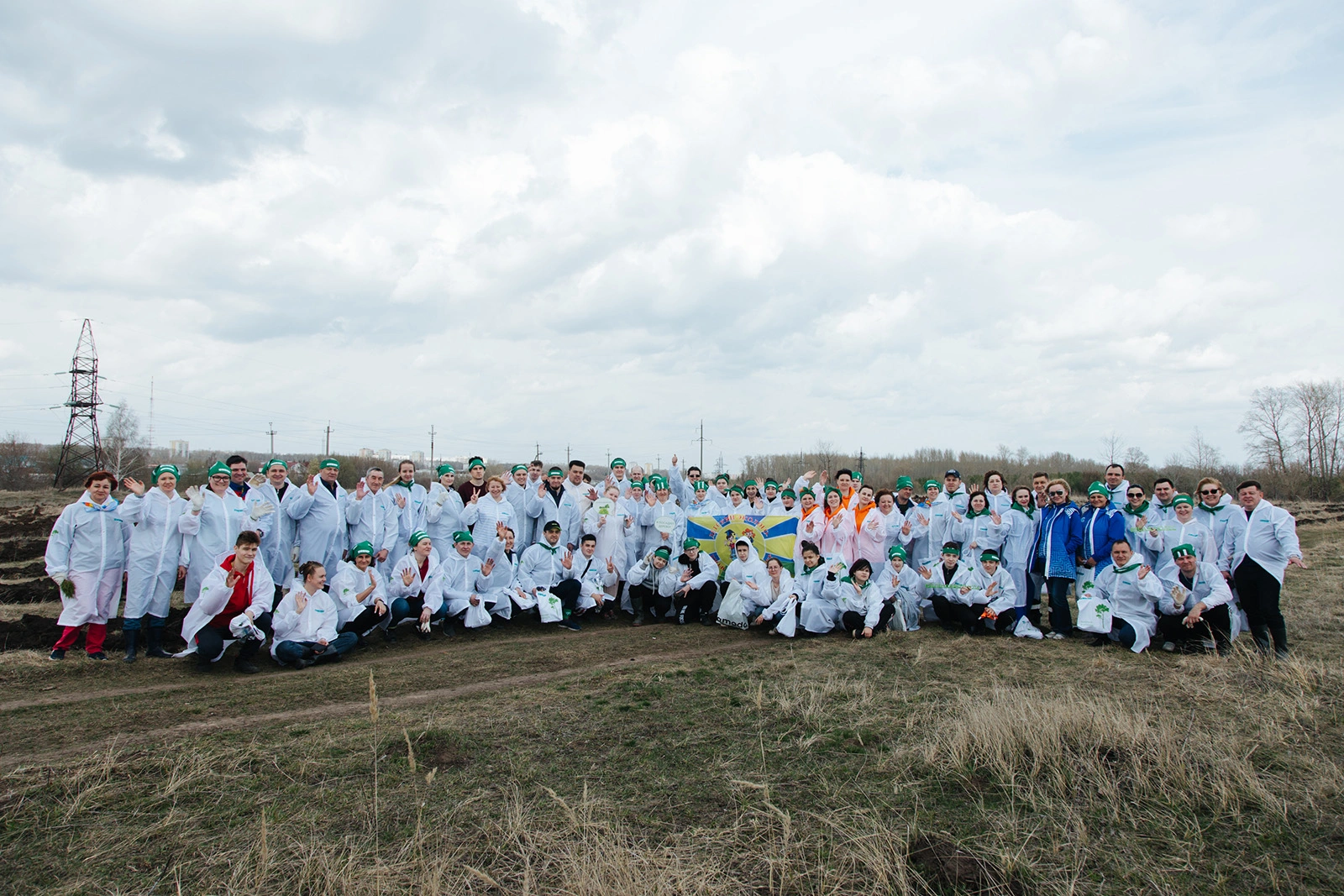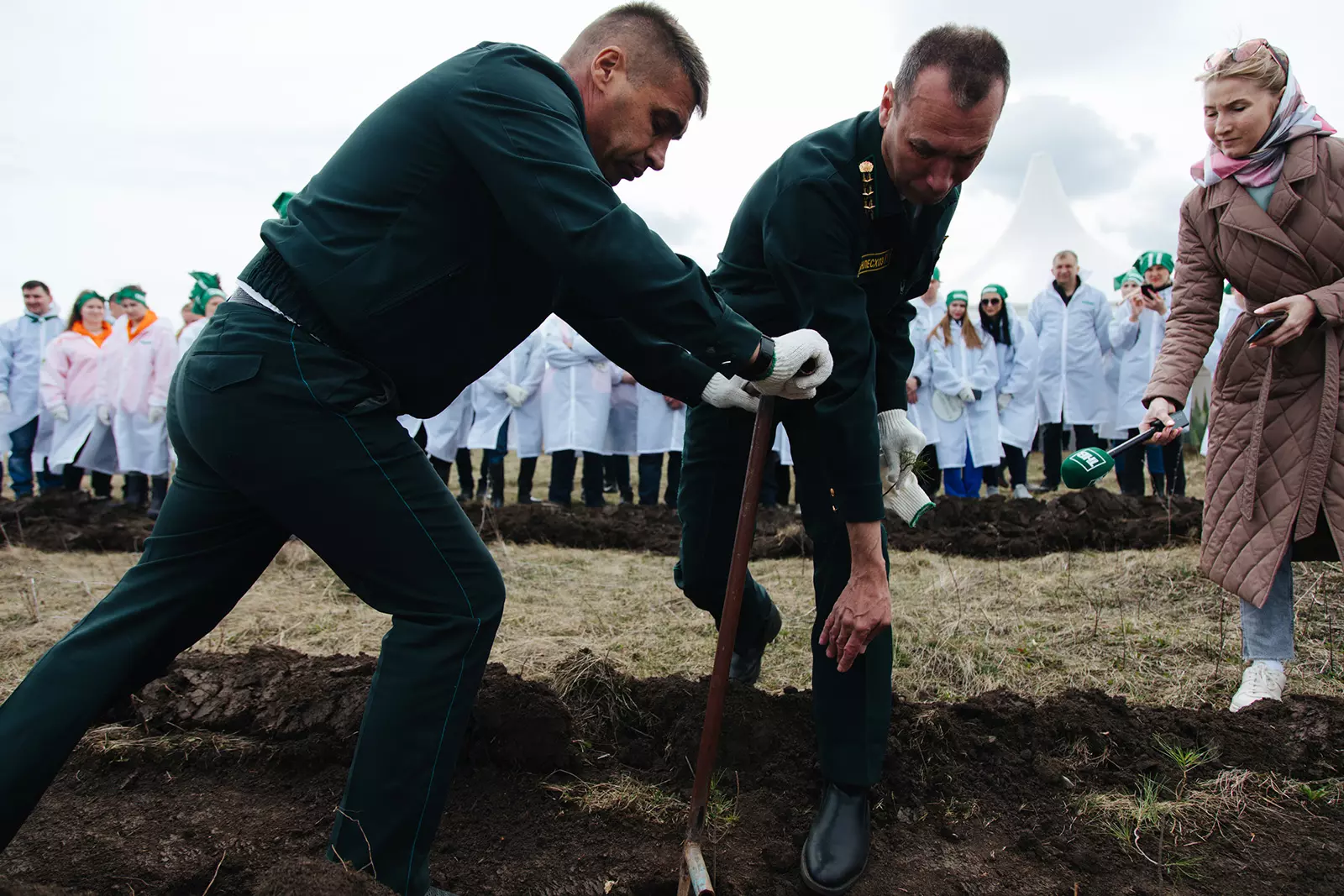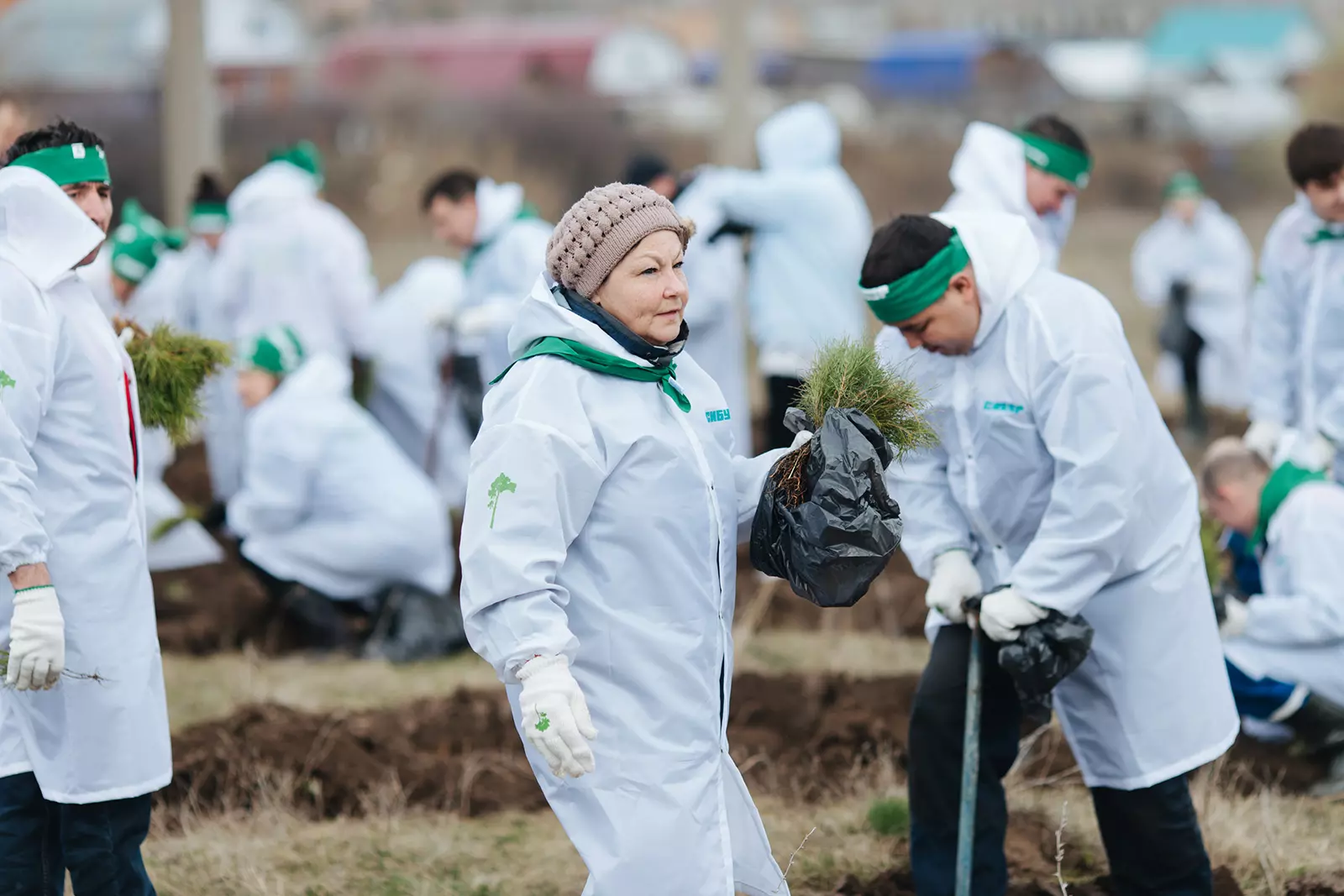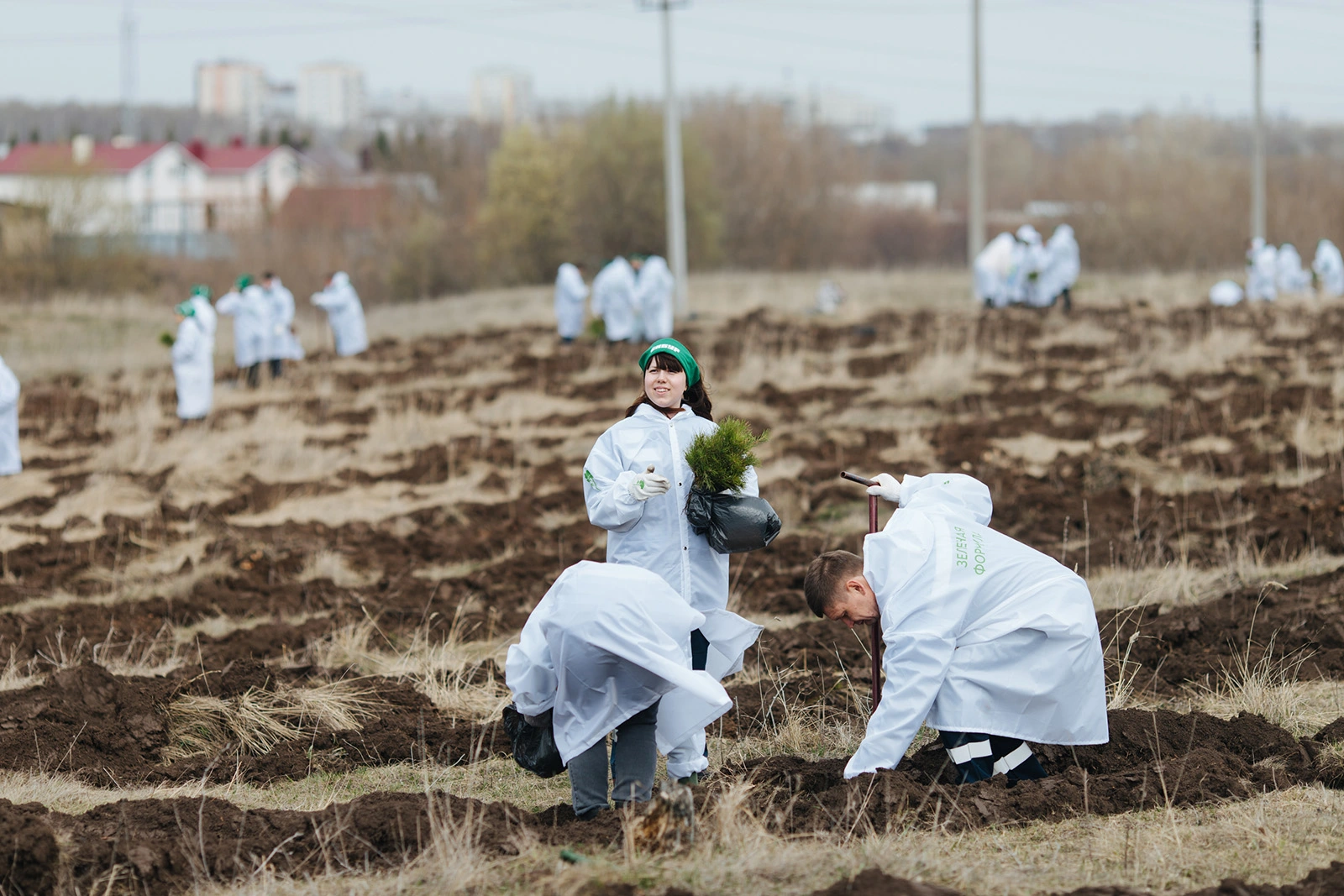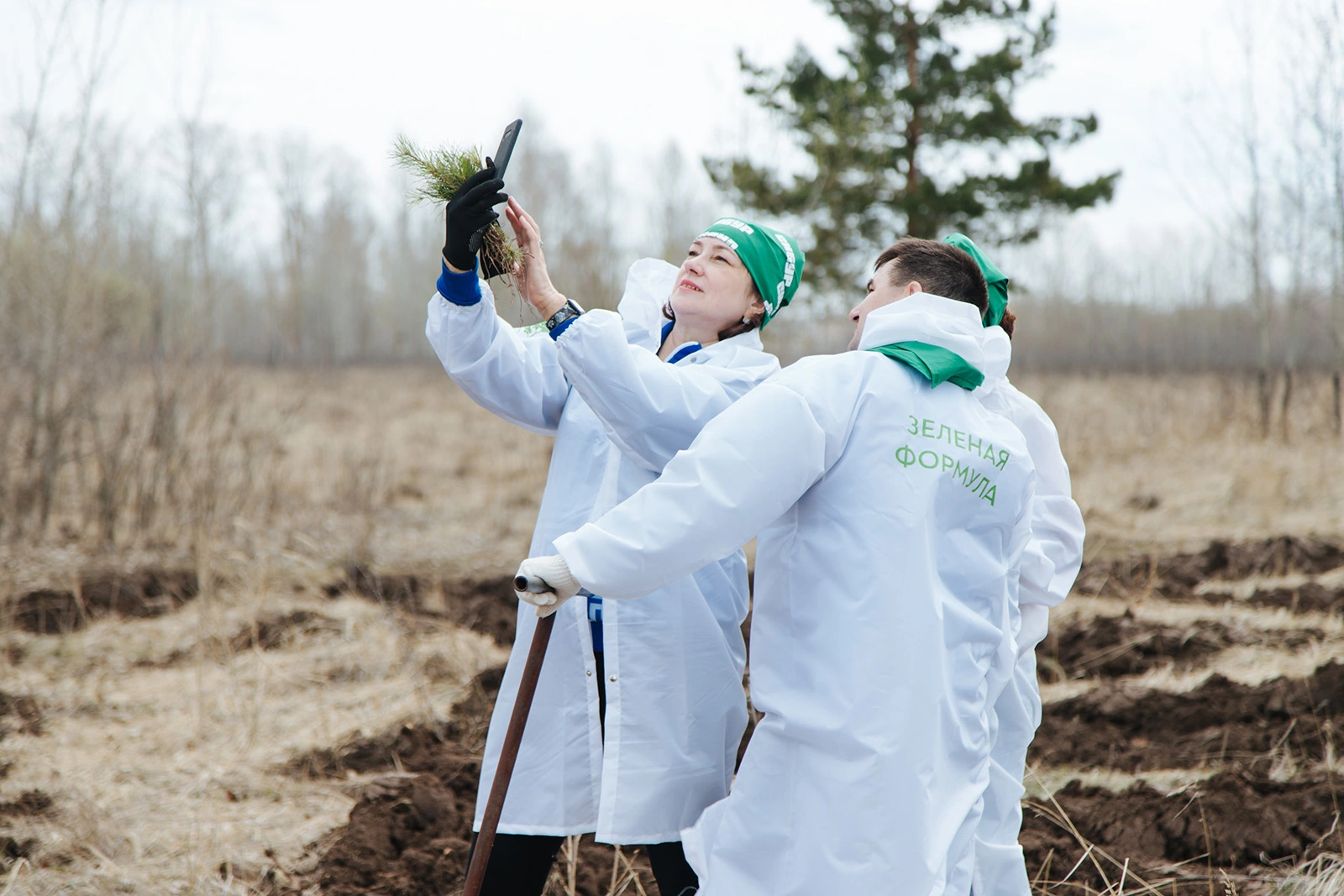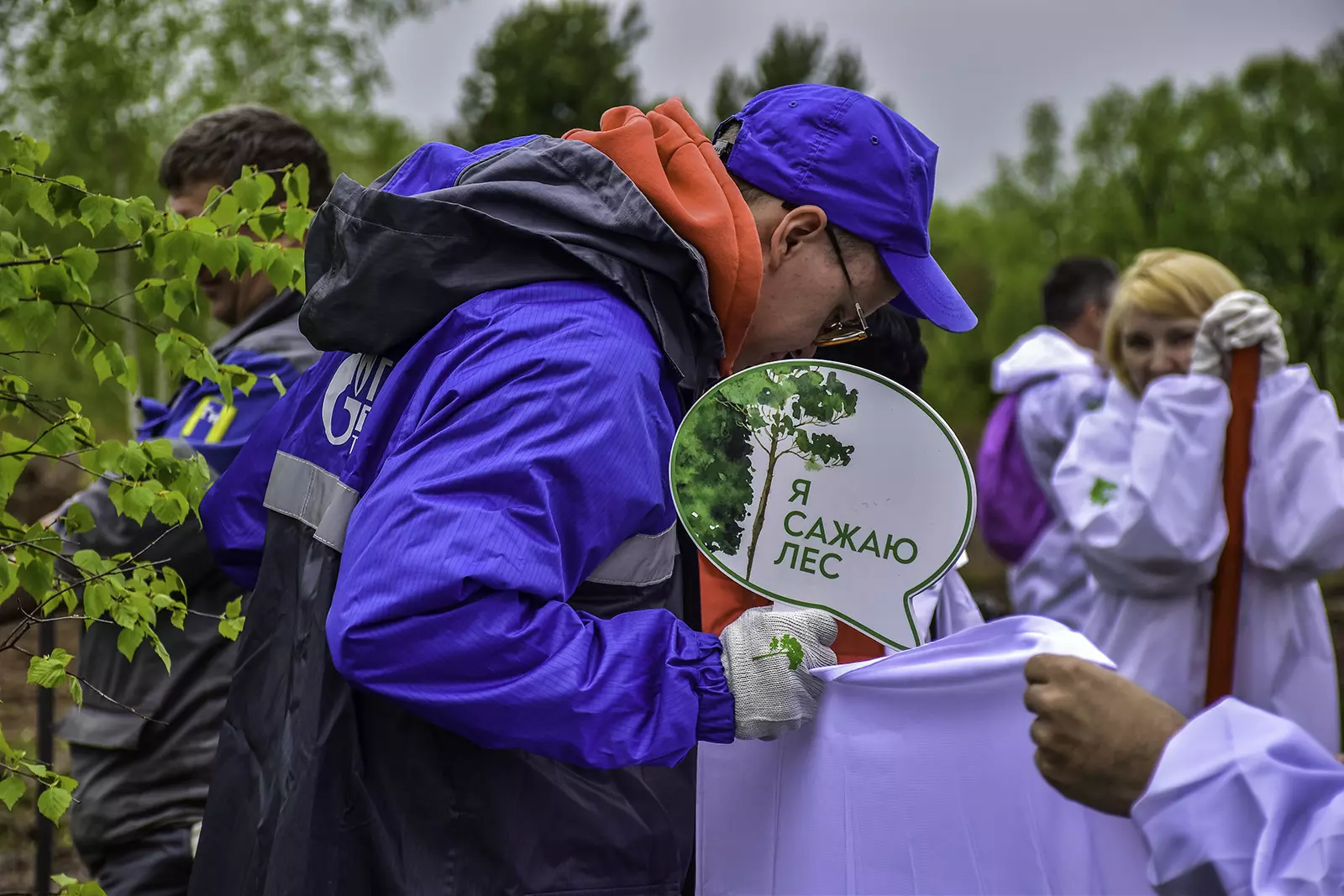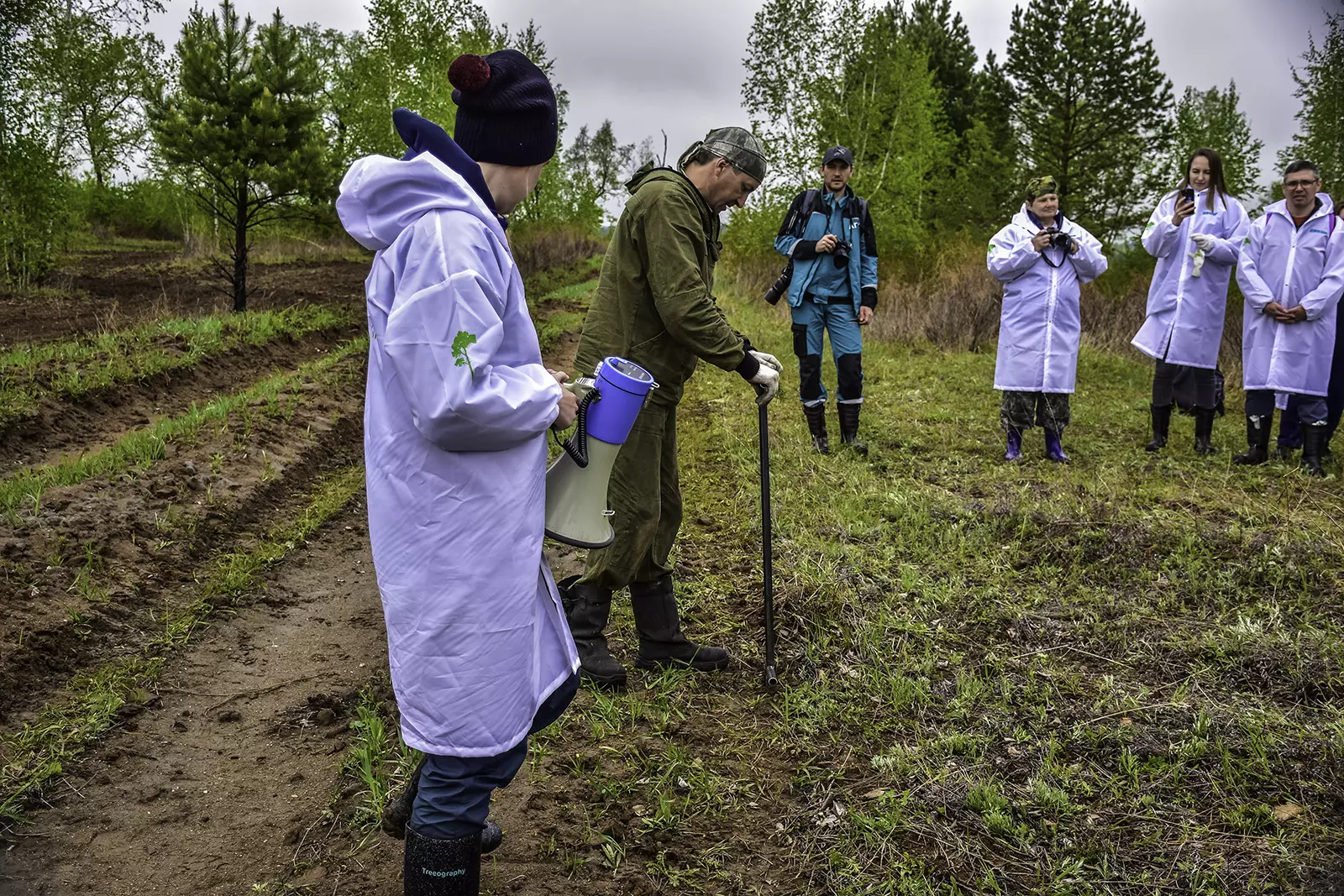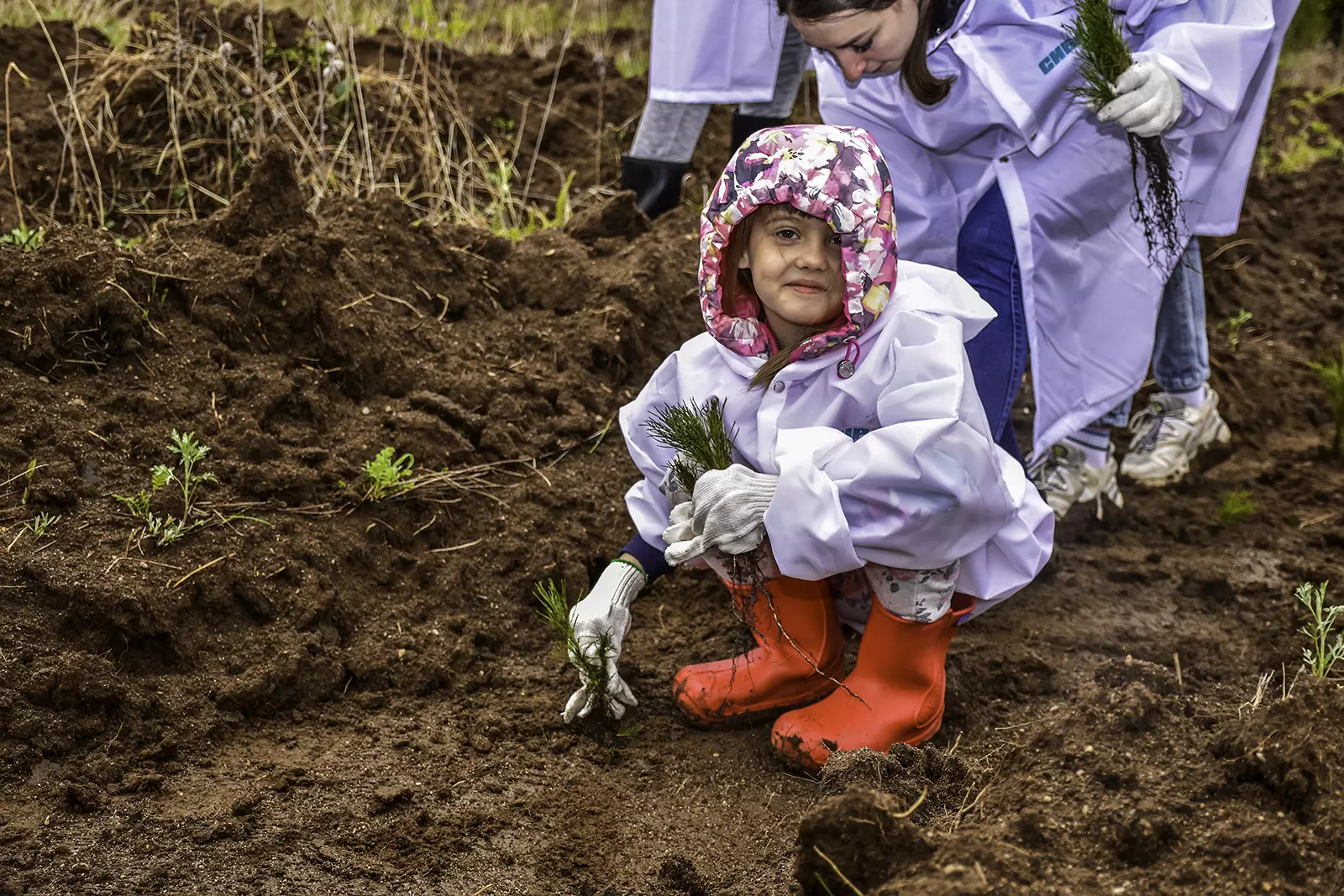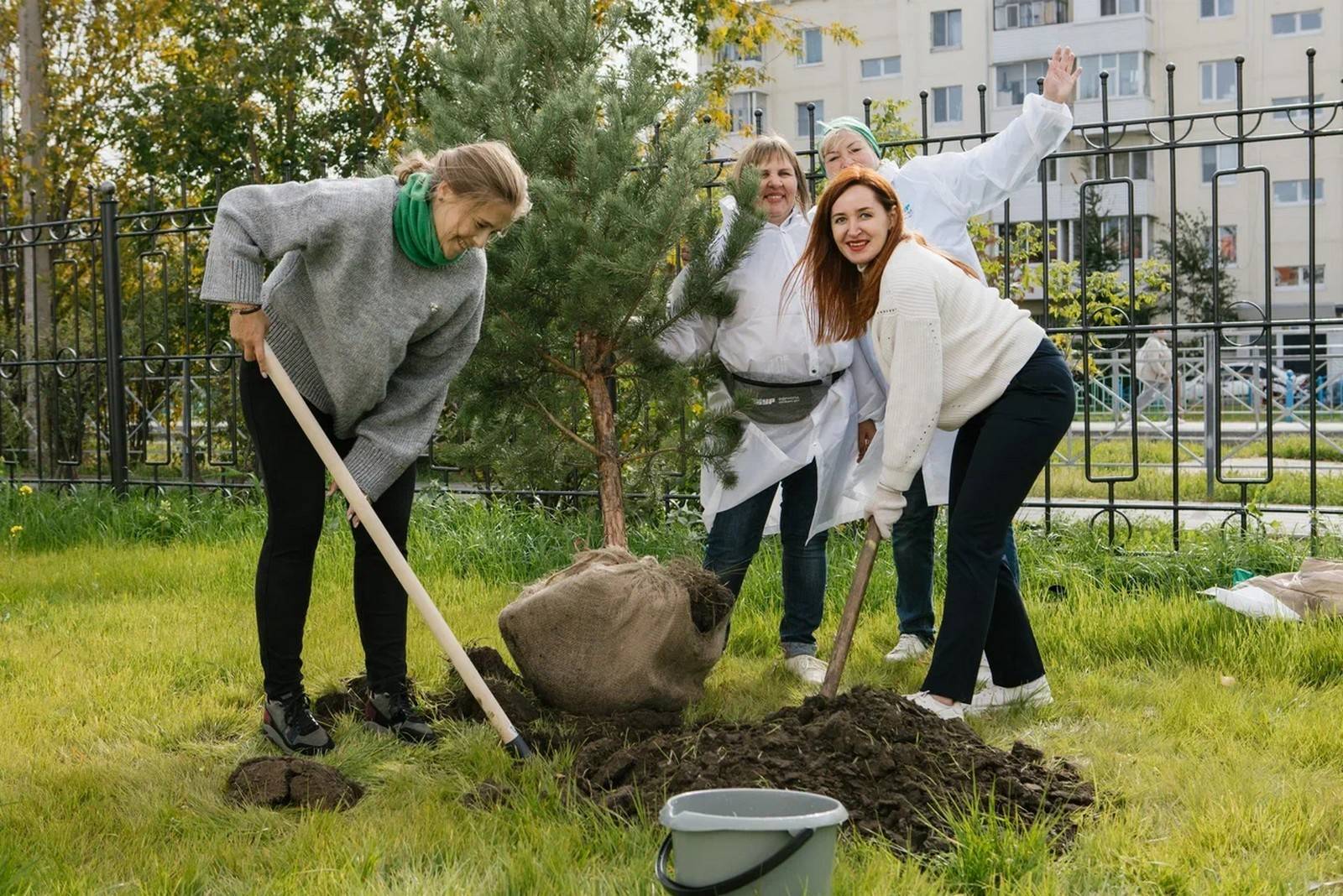
«The Green Formula»
SIBUR's large-scale reforestation
and climate
action program
- 173,800 pine seedlings
173 800 сеянцев сосны
173 800 сеянцев сосны
173 800 сеянцев сосны
173 800 сеянцев сосны
173 800 сеянцев сосны
173 800 сеянцев сосны
173 800 сеянцев сосны
173 800 сеянцев сосны
173 800 сеянцев сосны
173 800 сеянцев сосны
achieved
planted
participants
What is Green Formula?
Green Formula is SIBUR’s ambitious reforestation and climate-action program with a focus on extensive tree-planting efforts designed to partially offset our climate impact and to help preserve a healthy environment in the cities where we have a presence. It highlights our strong commitment to helping the nation achieve its reforestation goals. We have been providing our support to carbon measurement supersites working alongside scientists to advance reforestation and climate research. We believe that, by encouraging local residents and SIBUR's own employees to take part in our volunteering campaigns and through our continued support of local school forestry teams, we help instill a responsible attitude toward the environment and nurture an eco-friendly worldview. Our credo is that anyone's input can help make a difference.
SIBUR's sustainable development strategy identifies implementation of reforestation and climate-action projects as an important decarbonization tool. According to the strategy, the company will strive to ensure that, by 2025, at least 5 million new trees are planted in the regions where the company has a presence.
News
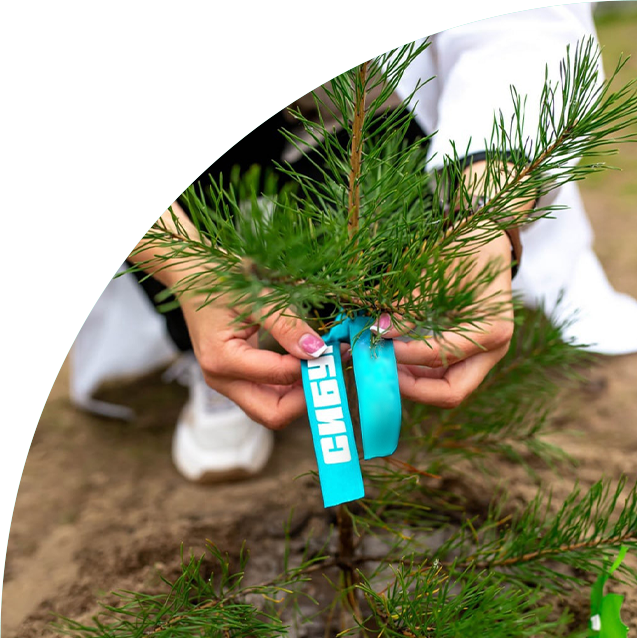
Carbon test sites
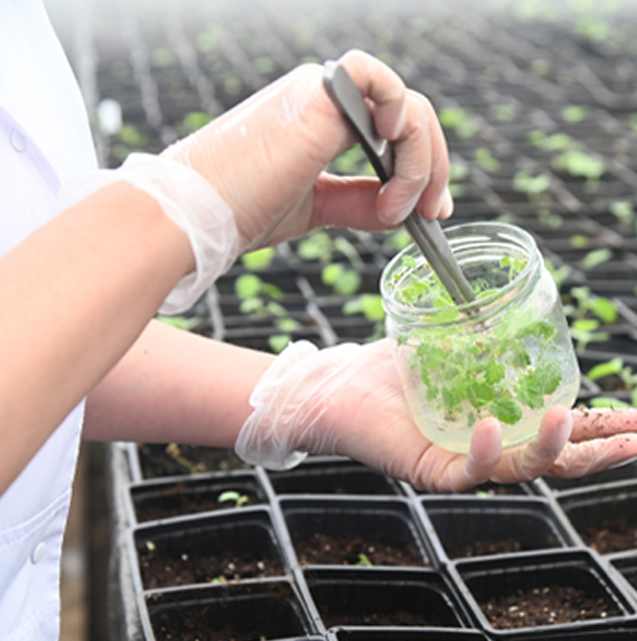
Voronezh carbon test site
In 2021, SIBUR and the Government of Voronezh Oblast jointly supported the establishment of a local carbon test site on the grounds of G.F. Morozov Voronezh State Forestry University's educational and experimental forestry facility.
2022 saw more than 500,000 saplings getting planted at the Voronezh test site, with the area used for planting as part of SIBUR's climate action project exceeding 155 hectares. In the future, the area of the carbon test site is expected to be expanded to 2,600 hectares. The company views this site as a test ground for its pilot project to issue carbon credits.
Mikhail Drapalyuk, Rector of G.F. Morozov VGLTU: Research and development carried out at our carbon test site are focused on obtaining reliable estimates of ecosystems’ carbon balance, on conducting experiments to develop and test ground-based and remote-sensing technologies used for measuring absorption of climate-affecting substances, as well as on improving sustainability of natural and anthropogenic ecosystem projects by implementing climate projects in the forestry field, and on reducing the carbon footprint at the level of the regional ecosystem.
Tyumen carbon test site
The carbon test site in Tyumen Oblast was inaugurated in 2021 with the support of SIBUR at Tyumen State University’s Lake Kuchak biology station and has since become a flagship facility in the network of carbon test sites organized by the Russian Ministry of Science and Higher Education.
On top of testing out various scientific and technological solutions for improving the efficiency of reforestation and climate action projects, the Tyumen carbon test site is being used to develop the scientific basis for the advancement of the network of carbon test sites in other regions across the nation.
In 2021, TSU hosted Russia’s first-ever four-day strategic educational training course dedicated to the topic of carbon. As part of the 2022 test site’s visit by governmental representatives and members of the science and business communities of Nizhegorodskaya Oblast, the site became the venue for a round table designed to present the university practical experience with organizing the carbon test site and to share information about the carbon agenda of various other regions.
Educational and research activities
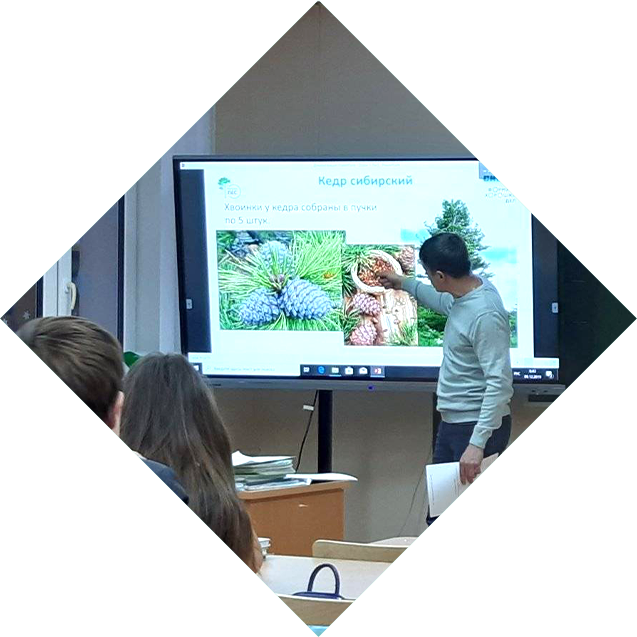
SIBUR has expanded its cooperation with regional school forestry teams. In 2022, they participated in tree planting campaigns in Blagoveshchensk (Bashkortostan), Kstovo and Dzerzhinsk (Nizhegorodskaya Oblast), Nizhnekamsk (Tatarstan), and Svobodny (Amur Oblast).
School forestry teams have been able to benefit from taking part in various events and advisory meetings, and obtain methodological materials provided for them. In the fall, the company put out a call for applications to equip forestry stations, and later selected eight winning bids made by the participating contestants after evaluated their applications. The forestry teams will be provided with sets of tools and equipment necessary for caring for the trees and for carrying out research, including the research that needs to be conducted at the planting sites.
Radmir Galimov, Chief Forester of the Nizhnekamsk Forestry:
«Through our interactions with schoolchildren, we can’t help seeing that they really care about the environment. As we do not just plant new trees, but also monitor their growth, the program gives us the opportunity to truly immerse ourselves in the study of the forest and its importance for the climate agenda. School students are thus empowered to search for and propose their own solutions for protecting the environment.».
A Q&A session with the experts:
Important questions aboutthe forest and the climate
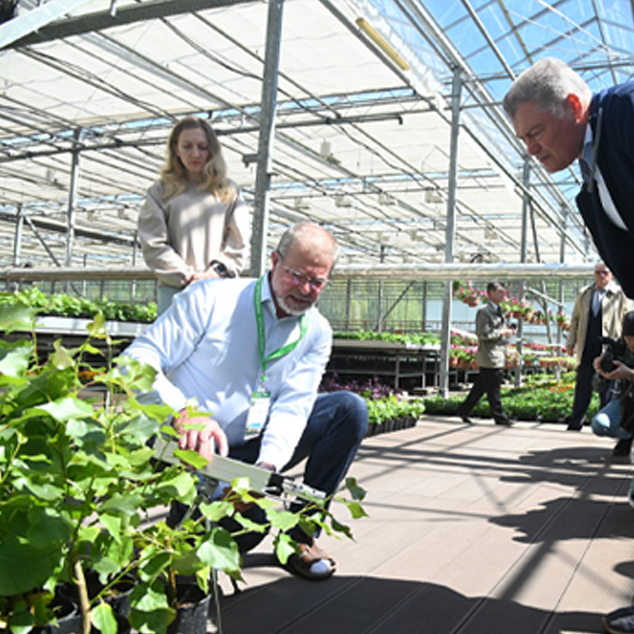
In addition to playing an important role in people's daily lives, forests offer a broad range of ecosystem services, including air purification, maintenance of water balance, protection of soils from erosion, and preservation of biodiversity.
The role of forests in maintaining the stability of the global climate is undeniable. This is the reason why projects related to reforestation and afforestation are perfect examples of Nature-based solutions to global environmental problems. As they grow, trees and other plants absorb great quantities of carbon dioxide (CO 2 ), one of the principal greenhouse gases, from the atmosphere, storing carbon in the biomass of their leaves, branches, stems, and roots.
Because forests have tremendous potential for carbon sequestration and storage, reforestation and afforestation are among the most effective decarbonization tools, in addition to other various measures taken by mankind to reduce emissions from anthropogenic activities.
Thanks to the process of photosynthesis, trees absorb CO 2 from the atmosphere as they grow and develop. They then transform it into biomass carbon and store it in their leaves, branches, stems and roots while at the same releasing oxygen as a photosynthesis byproduct back into the atmosphere. One hectare of tree-covered land can absorb between 1 and 18 tons of carbon dioxide a year, with the absorption rate dependent on the trees’ growing conditions and age. Most of carbon absorption usually occurs at the age range of 10 to 40 years, and with some tree species their absorption capacity can remain at a high level until they reach the age of 60. As an example, by the age of 30, the accumulated volume of carbon absorbed by 360 hectares of white poplar is equivalent to annual carbon dioxide emissions produced by one large industrial enterprise in the amount of approximately 160 thousand tons.
Clearly, fast-growing tree species showing significant annual increase in their biomass are the best candidates for acting as carbon sinks. However, long-term storage of carbon in plant biomass is much more important for the climate. Fast-growing and long-living tree species are perfect absorbers and stores of previously accumulated carbon, but, unfortunately, these traits are often mutually exclusive as fast-growing trees tend to have shorter lifespans, while long-lived trees tend to be slow- growing. Therefore, a compromise can be achieved by cultivating economically valuable species (such as coniferous trees) allowing the carbon dioxide absorbed by the trees throughout their lives and the carbon accumulated in wood to be preserved for a long time inside various wood products (such as pieces of furniture, timber structures, etc.). As a result, this artificial carbon sink will also contribute to the reduction of atmospheric concentrations of CO 2 and help mitigate anthropogenic impact on the climate.
Many have heard about paulownia and its spectacular rate of growth and carbon dioxide absorption capacity. However, this species prefers very warm climates and is unsuitable for being cultivated in most climate zones of Russia. On top of that, it is alien to our local flora. Of all endemic Russian conifers, pine and larch have the greatest capacity to absorb carbon dioxide, whereas oak, poplar, birch and willow and among are the leaders among deciduous species. Nor should we forget the achievements of Russian breeders of forest tree species who have succeeded in creating various hybrids and varieties of poplars whose carbon sequestration potential is truly unique. They are the ones that can serve as the basis for setting up carbon farms and present an excellent alternative to the famous paulownia.
A carbon test site is a research facility that is home to the types of ecosystems that are typical for a given region, designed to measure greenhouse gas emissions and uptake using ground-based and remote monitoring methods. Simply put, carbon test sites can be compared to monitoring stations, and, provided there is a sufficient number of them and they can be operated for an extended length of time, they can become the foundation of a national network for monitoring climate-affecting gas flows across Russia’s ecosystems. Carbon test sites are also used to train highly skilled personnel capable of operating latest environmental monitoring equipment and systems, and of using advanced low- carbon manufacturing and agriculture technologies, as these sites are used to conduct experiments with controlling the carbon balance and reducing greenhouse gas emissions while increasing the carbon dioxide absorption potential of natural and anthropogenic ecosystems.
Results of the research conducted at a carbon test site can be translated into a climate project seeking to achieve anthropogenic absorption of carbon dioxide and generation of carbon units.
Climate projects, once implement, result in producing what is known as carbon credits expressed as the amount of prevented or absorbed carbon emissions in tons of CO 2 equivalent. Companies can act as both issuers of carbon credits and as their buyers to offset their carbon footprint. Buyers of carbon credits voluntarily assume an obligation to reduce their carbon footprint or bring it down to zero, i.e. achieve carbon neutrality. It needs to be understood that the issuance or purchase of carbon credits is just one of the tools that could be used to offset one’s climate impact and they have to be complemented by other ways efforts to reduce direct and indirect greenhouse gas emissions.
Photos and videos of volunteering sapling planting campaigns
